Abandoned hotels and resorts in the former Yugoslavia
Of all the forgotten places we visit, there is something particularly evocative about abandoned hotels and resorts. Perhaps it’s the eerie feeling we get from picturing corridors filled with guests coming and going, along with bars and restaurants buzzing with laughter and chatter. We also have a fondness for abandoned swimming pools, and it’s equally easy to imagine the sounds of splashing water and screams of excitement that would have resounded from the resort swimming pool.
Abandoned hotels and resorts are playgrounds for urban explorers the world over but, as we do most of our travelling in Asia and Europe these days, it won’t come as a surprise that a large proportion of the abandoned hotels we poke around in are in the Balkans and, in this case, countries of the former Yugoslavia. All of the properties listed below became abandoned as a result of the Yugoslav Wars, which began in 1991 and lasted until 2001. Where possible, I have added more information in the relevant sections.
Here’s a round-up of some abandoned hotels in Montenegro, Croatia, and Bosnia and Herzegovina that you’re unlikely to be checking in to any time soon …
Grmeč Hotel, Bosnia and Herzegovina
This abandoned hotel was nearby an also-abandoned spomenik in central Bosnia and Herzegovina. For those that don’t know, spomeniks are monuments and memorials that commemorate events that took place in Yugoslavia during World War II. They were erected all over the country, from the 1960s through to the 1980s, when the benevolent dictator, Josip Broz “Tito”, was in charge. Although there aren’t as many standing as there used to be, spomeniks, can still be found scattered throughout all of the countries that once formed Yugoslavia and when we are in the region we actively look for them.
This is not the first time that we have come across a spomenik that also had, or in some cases still has, a hotel attached to it. These hotels were either for the exclusive use of party officials and important dignitaries or, in other cases, constructed to cater to the expected number of regular Yugoslavian visitors who would come not only see the memorial complex but also to enjoy the natural surroundings in which many of the larger, and more important, spomeniks were located.
Information about the Grmeč Hotel is lacking but given that the spomenik, which is called the Monument to the Revolution, was completed in 1979, it is highly likely that the hotel was built around the same time.
To say that both the monument and the hotel were in the middle of nowhere would be an understatement. We had to drive for about 7kms on a very isolated road that was full of twists and turns and not especially in good condition to reach the hotel and once there, the silence was deafening. It didn’t help that, shortly after our arrival, the entire area became engulfed in a heavy blanket of fog and the wind also kicked up. The silence was replaced by the eerie sound of swaying trees and although Kirsty came with me along the not-very-inviting 500-metre forested track to see the spomenik, no amount of persuasion could convince her to enter the hotel and so she waited at its entrance while I had a quick look around. There was very little to see inside the ruins of the hotel and both of us were quietly relieved once we’d got back down to the main road and could see civilisation once more.
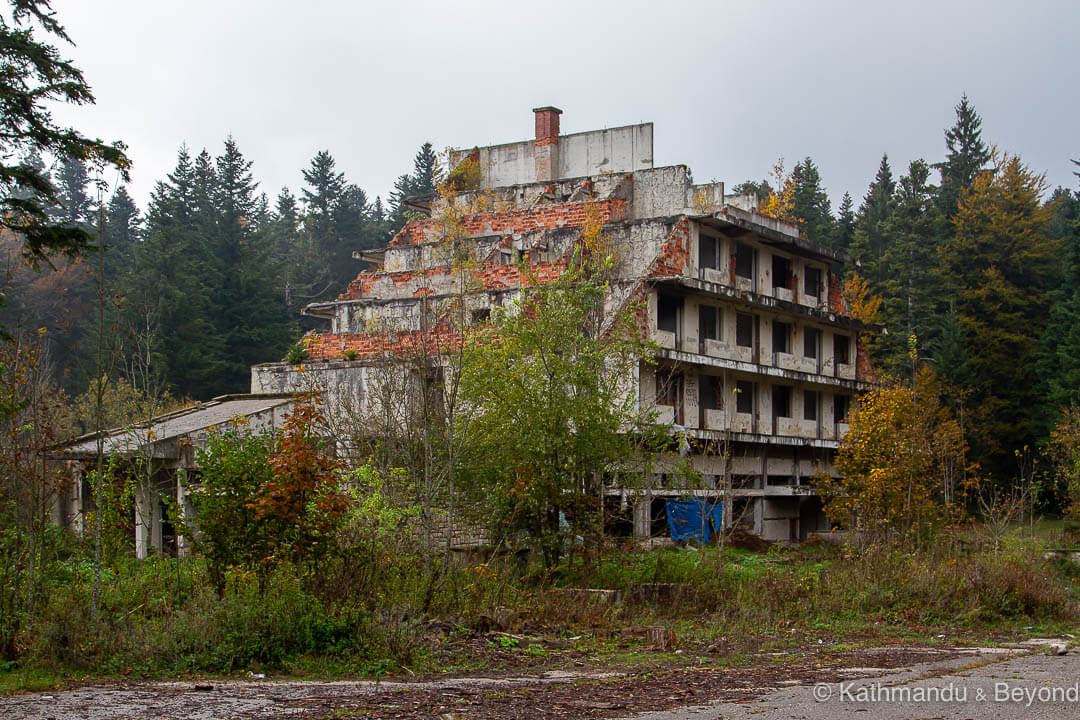
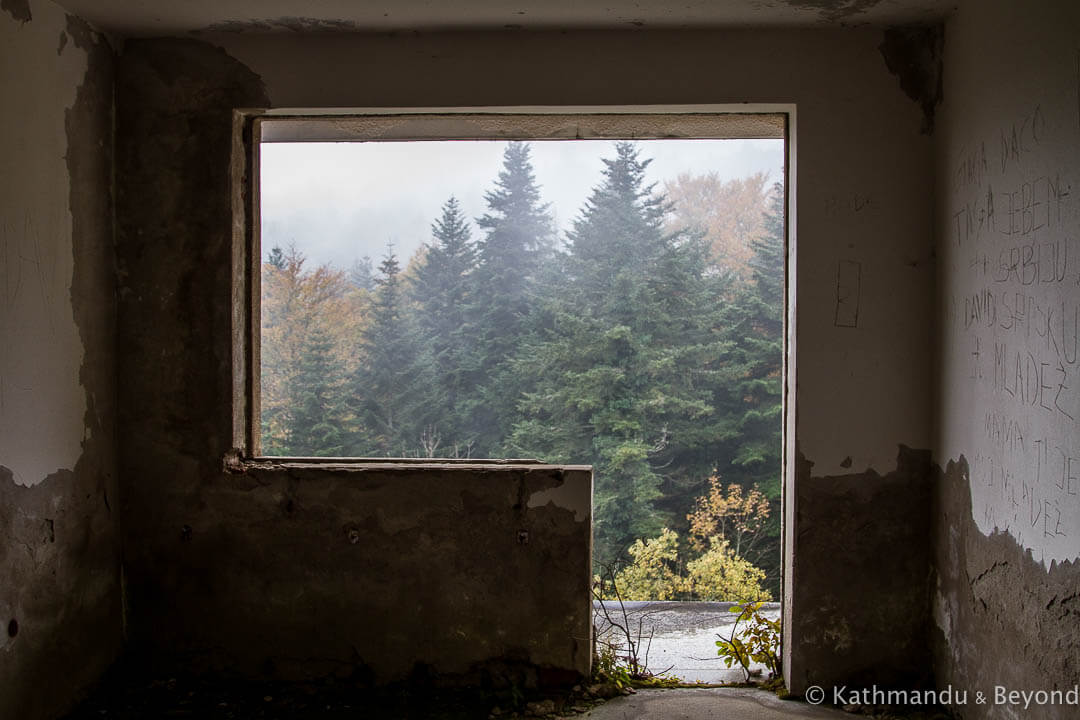
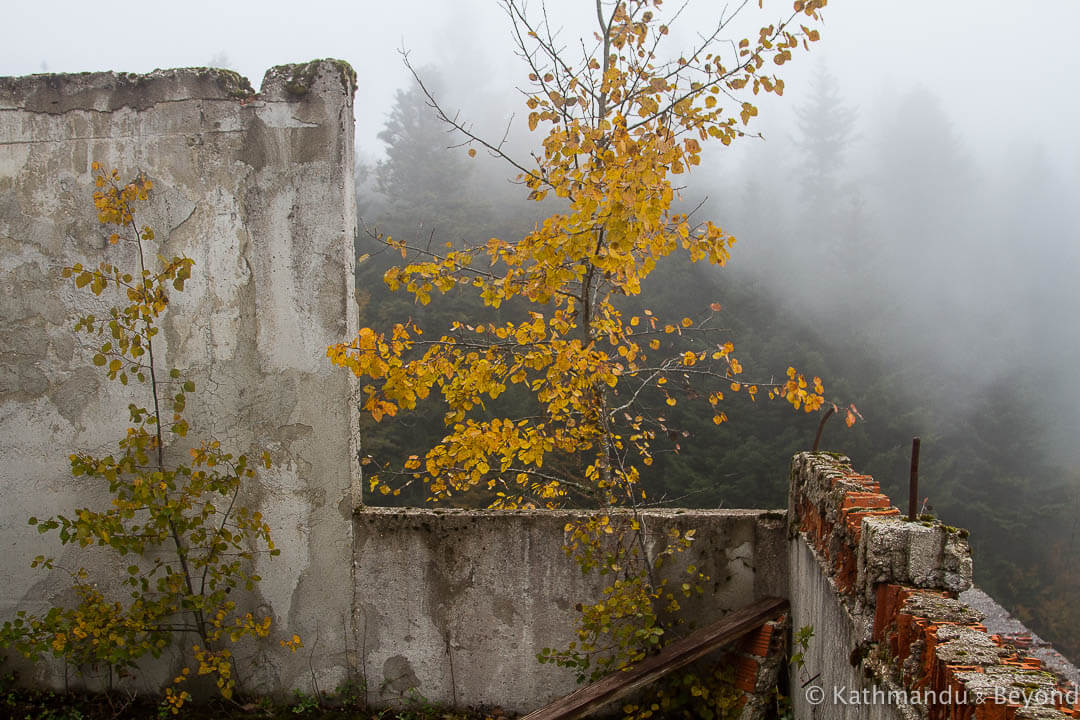
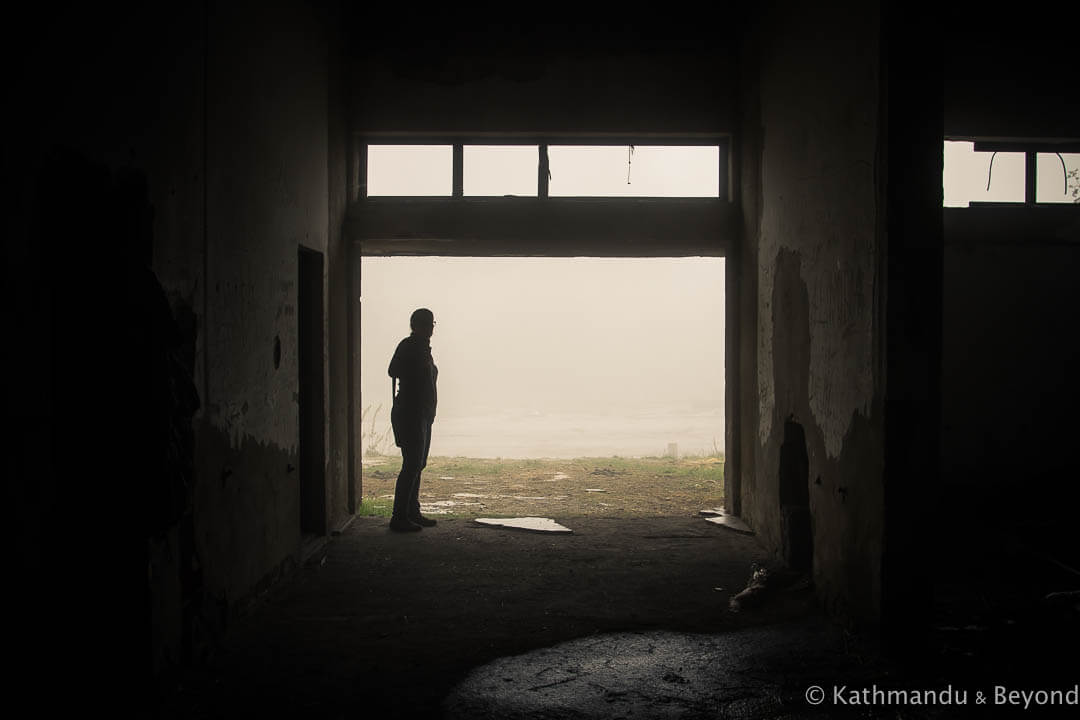
Haludovo Palace Hotel on Krk Island, Croatia
The Haludovo Palace on the Croatian island of Krk is probably the most well-known abandoned hotel in the former Yugoslavia. It’s association with Penthouse Magazine founder, Bob Guccione, is well documented (and makes for great clickbait!), and the irresistible modern facade that overhangs the outdoor swimming pool is one of the most photographed abandoned structures when it comes to urban exploration in the Balkans.
Opened in the early 1970s, the hotel, which also had a casino attached to it, started off well and attracted many wealthy foreign guests. But, a combination of factors, including Yugoslavian law that forbad any of its nationals from gambling, the start of the Yugoslav Wars and subsequent influx of refugees (some of whom were reluctant to leave the property), as well as the promises of investment that never materialised, meant that in 2002 the hotel shut down or good.
READ MORE: Abandoned Croatia: Haludovo Palace Hotel on Krk Island
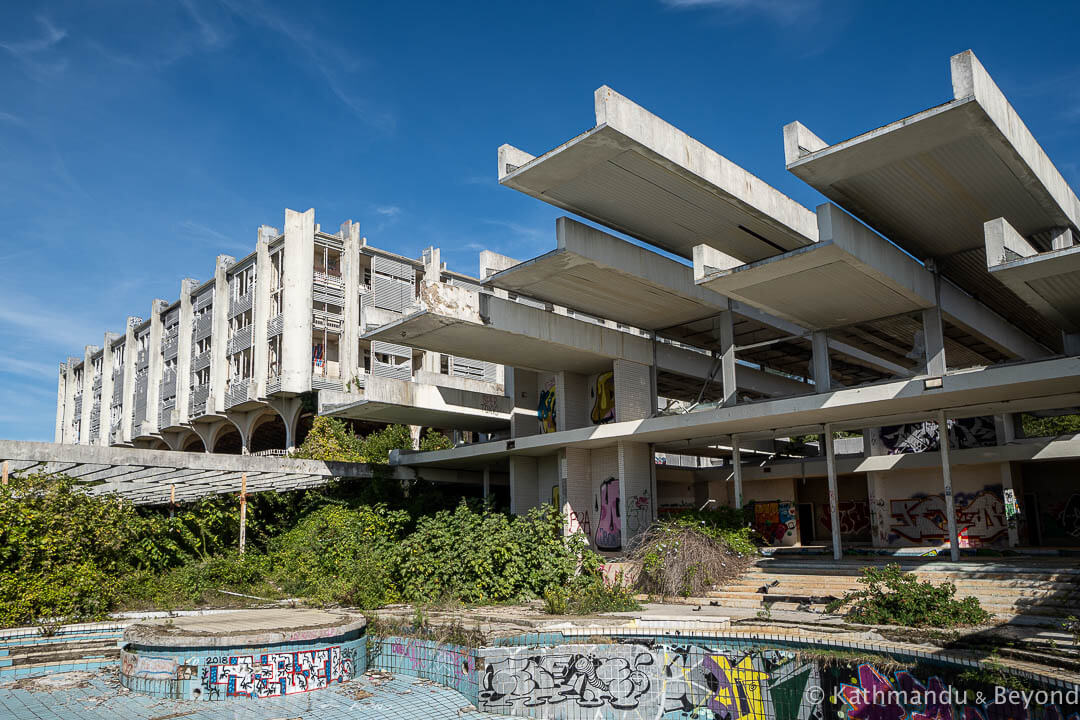
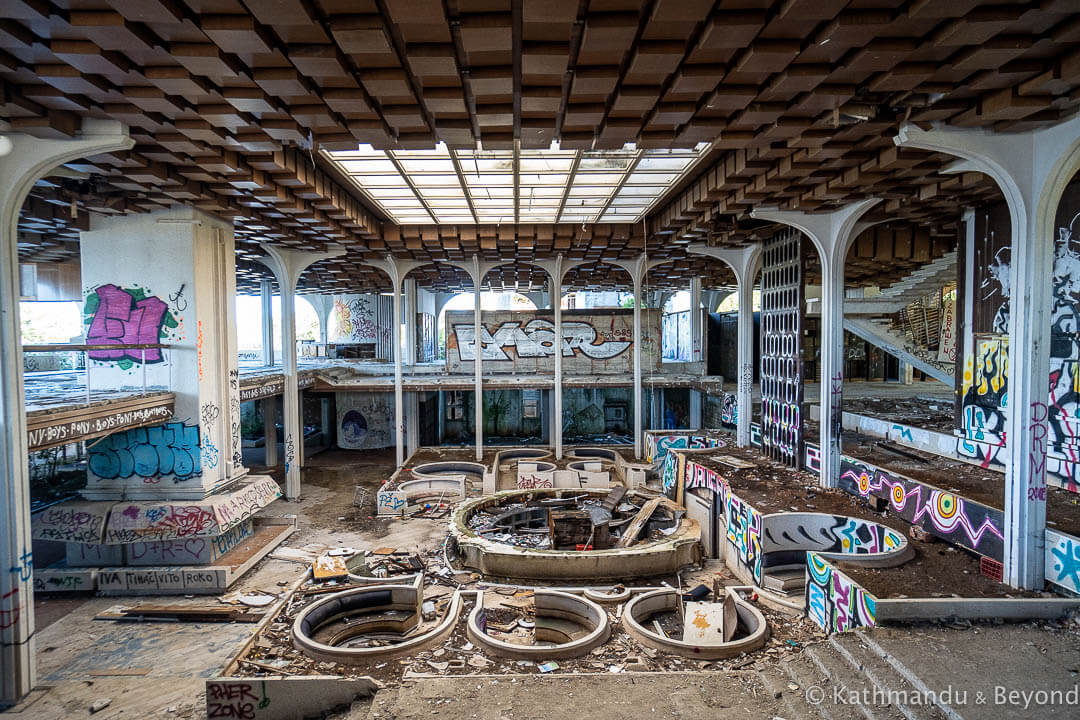
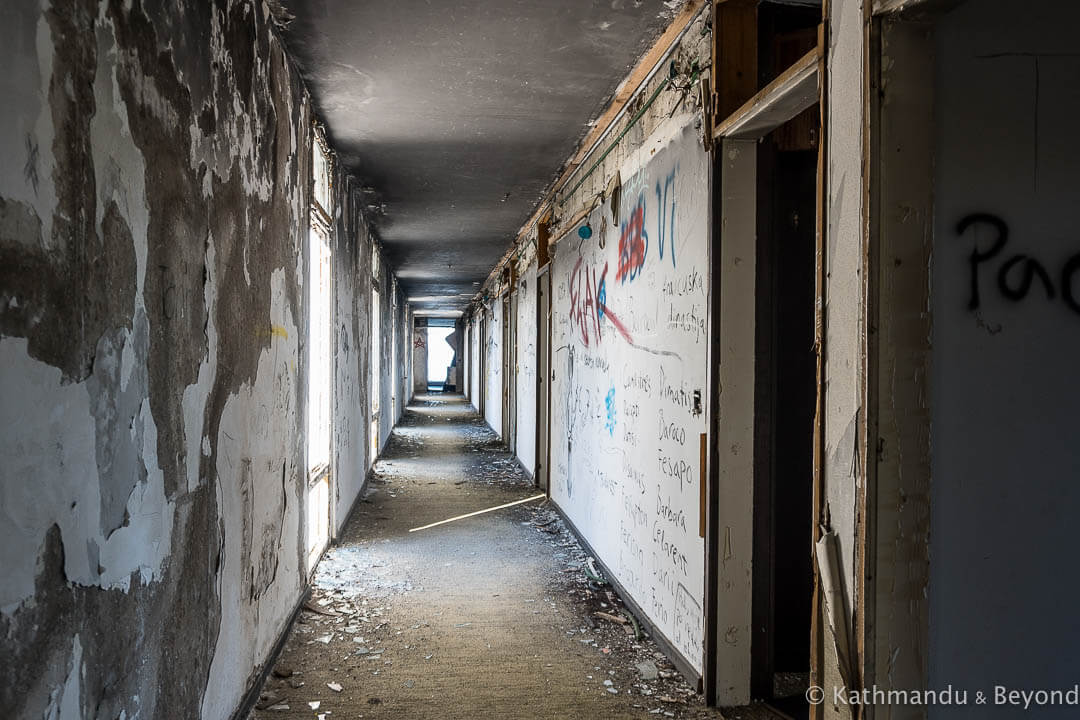
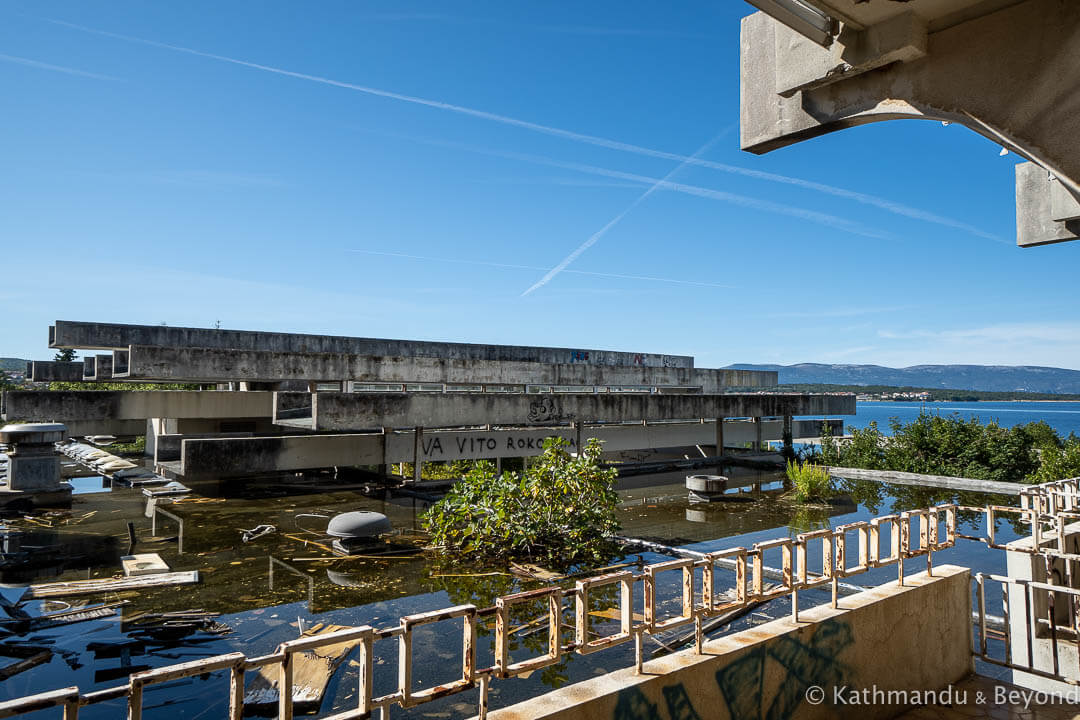
Hotel Igman, Bosnia and Herzegovina
The Hotel Igman was constructed for the 1984 Winter Olympics which were hosted by the city of Sarajevo, some 30kms to the northeast. Designed in brutalist style by Bosnian architect, Ahmed Džuvić, the six-storey, 162-room property served its purpose but its fate became intertwined with events that took place during the Bosnian War (1992-1995) and, eventually, the property fell into a state of abandonment.
There is nothing left inside the building apart from lots of bare concrete, some graffiti and the odd splash of paint here and there which is down to the fact that the place is sometimes used as a location for paint-balling. Apart from learning about the history, the most compelling thing about the Hotel Igman is the remains of its harsh exterior. Fans of this style of architecture will be mesmerised by the curves and contours of this huge structure which was originally designed to blend in with the area’s alpine setting.
READ MORE: The Olympic ski jumps and former Hotel Igman in Bosnia and Herzegovina
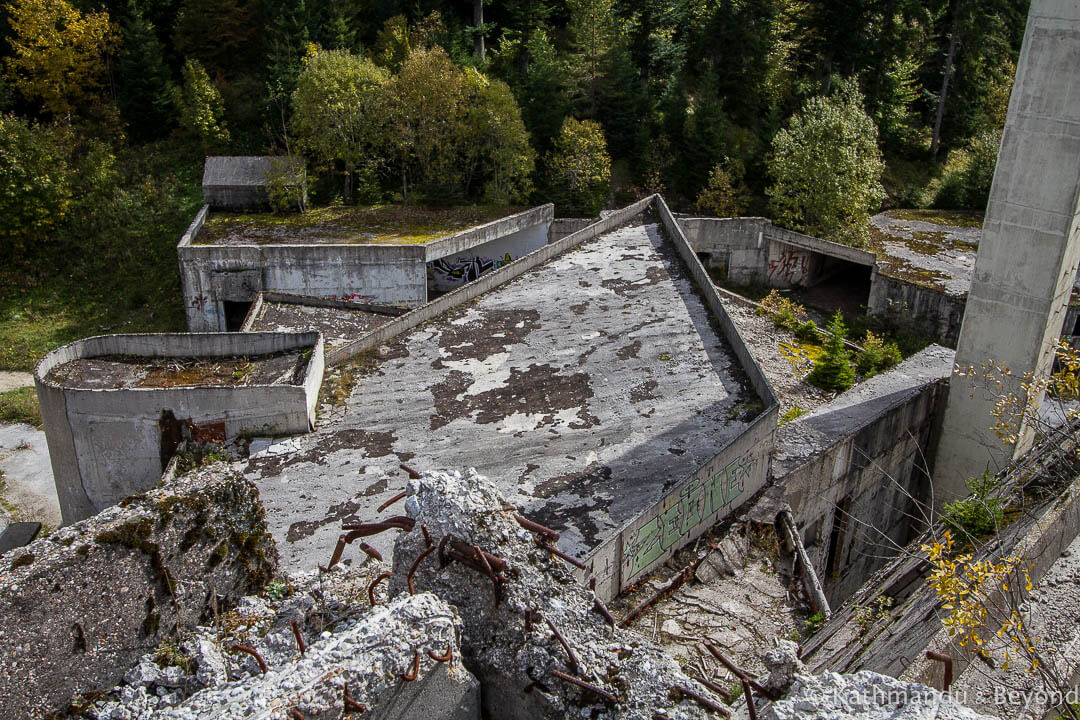
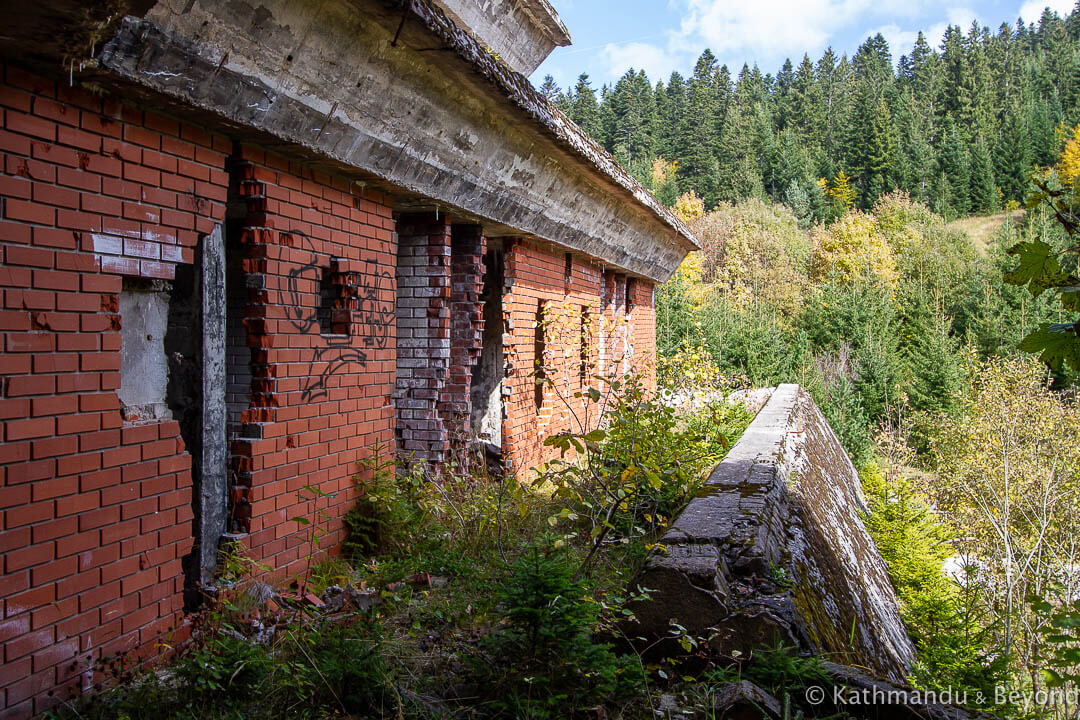
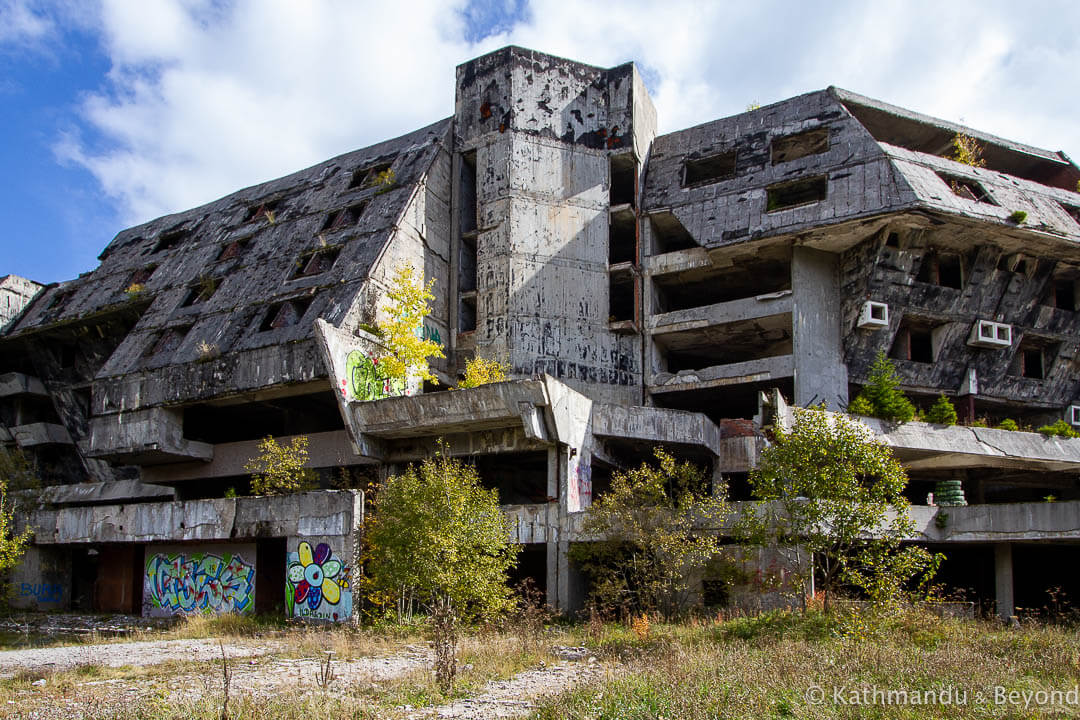
The Bay of Hotels at Kupari, Croatia
Out of all the abandoned hotels we’ve explored in the former Yugoslavia, those situated near the village of Kupari in southern Croatia are the most varied and interesting. There are five properties in total. Each one looks onto an inlet of the Adriatic Sea called Župa Bay and they range in architectural style from 1920s grandeur to late 1970s modernism.
As far as we know, for the time being, the site is completely accessible and it’s easy to spend half a day rummaging through the skeletons of these once-popular resort-hotels. The large indoor swimming pool at the Hotel Kupari, the previously-opulent entrance to the Hotel Grand and the sweeping view from the roof of the Hotel Goričina II are some of the highlights. But, this level of urbexing freedom is unlikely to last forever. Župa Bay is a mere 10kms southeast of Dubrovnik and pre-COVID-19, hotel chains such as Ritz Carlton and Four Seasons have been linked with redevelopment projects that would see the bay become a prestigious and luxury resort area once more. Whether current world events will give future urban explorers more time to discover places such as the Bay of Hotels at Kupari is something I have pondered but real estate in such a stunning location as this one is always going to be on some would-be developer’s radar.
READ MORE: Visiting the Bay of Abandoned Hotels in Kupari, Croatia
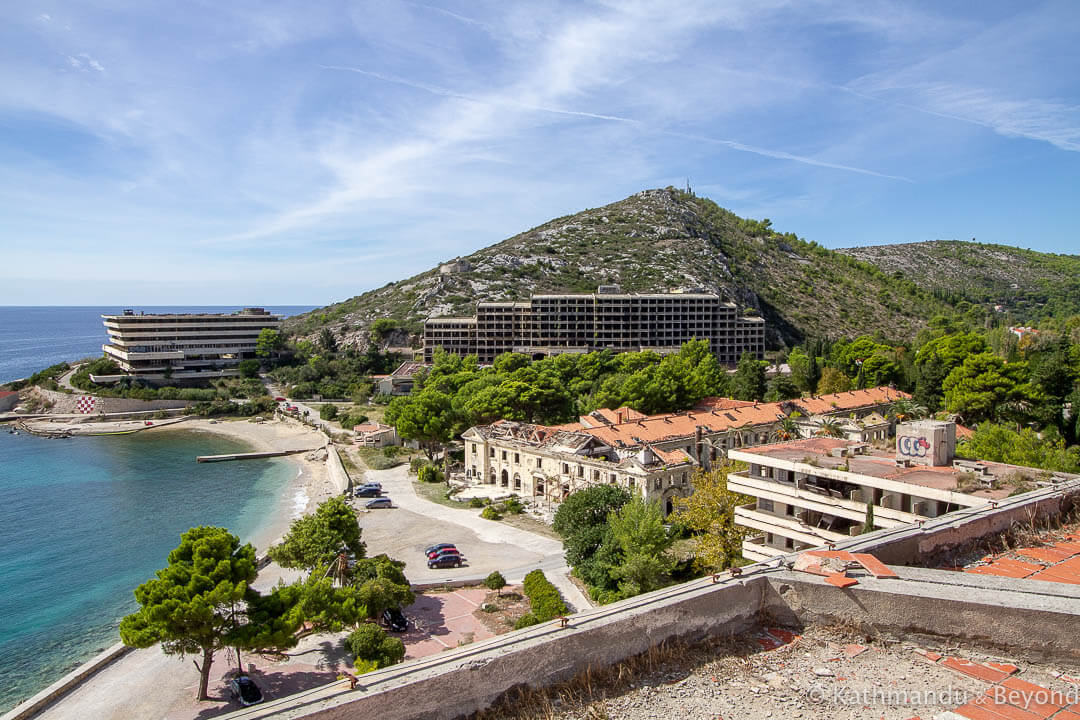
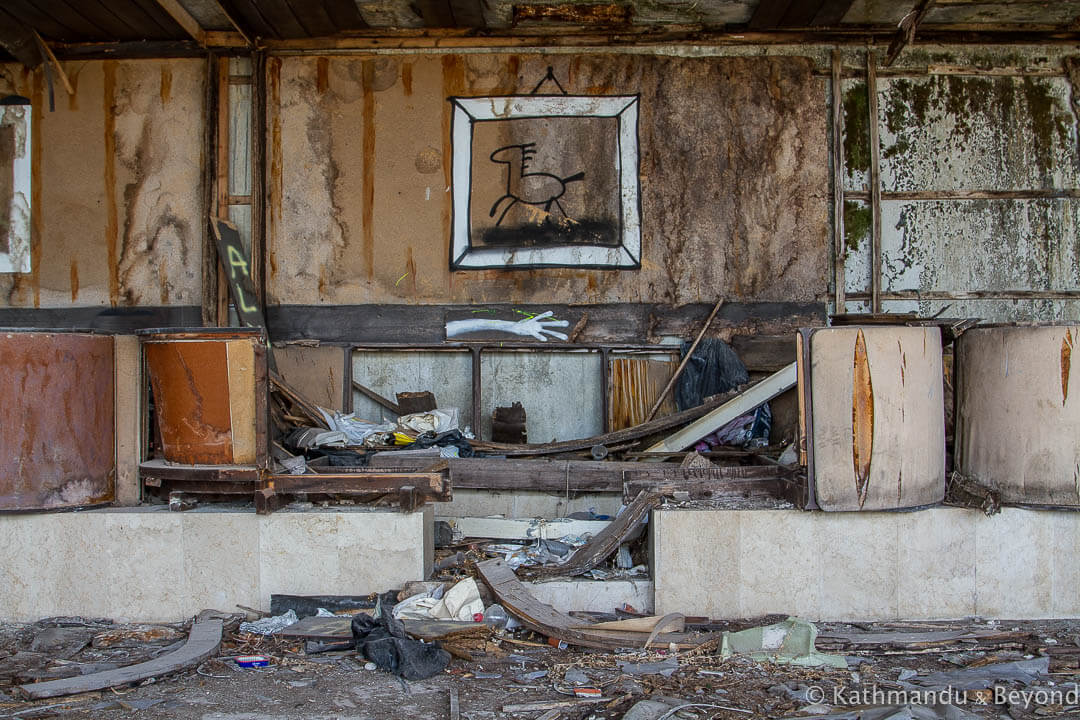
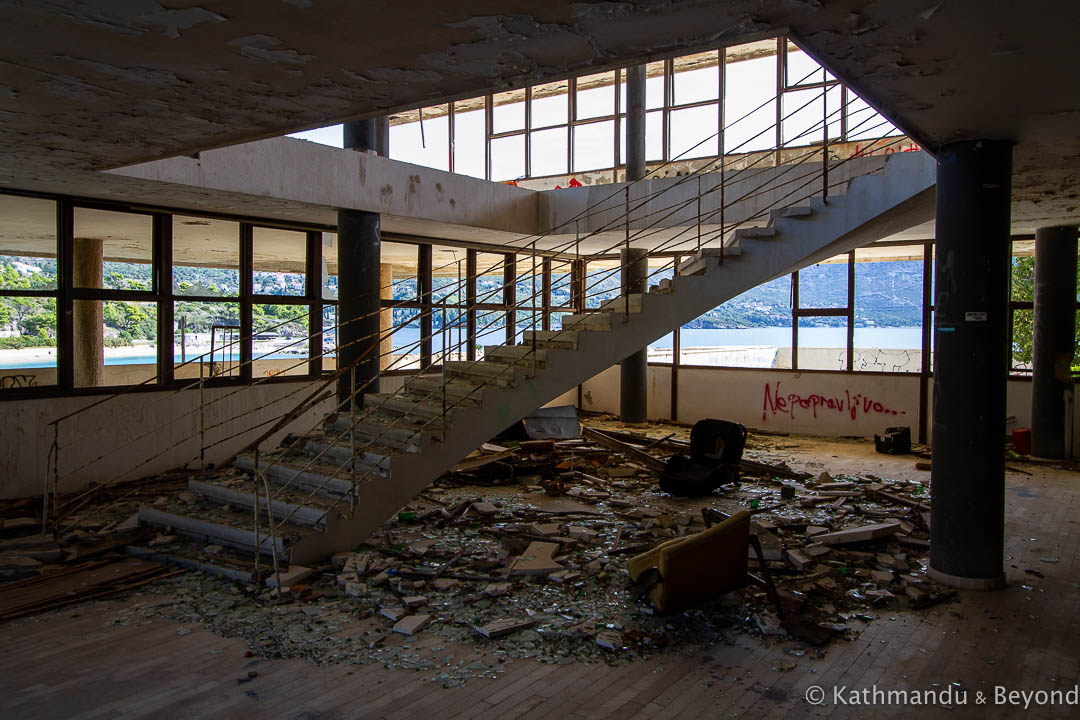
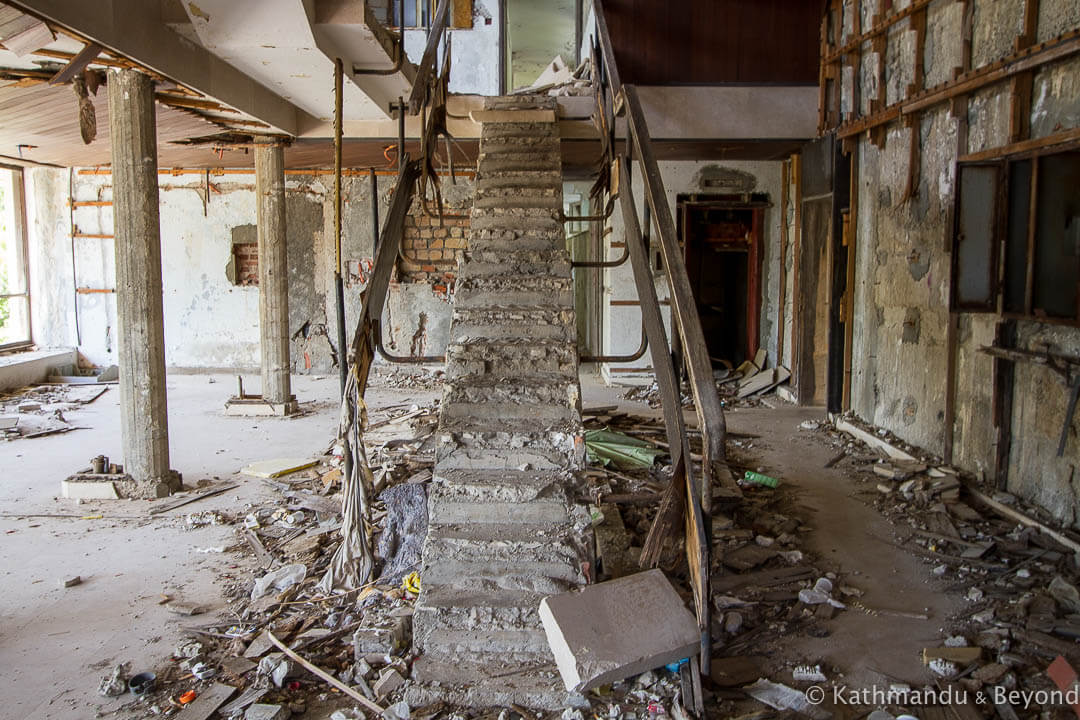
Motel EHOS, Bosnia and Herzegovina
Another property ravaged by war, like the abandoned Hotel Igman near Sarajevo, the Motel EHOS has a dark history associated with the Bosnian War. Also called the Motel Miljevina, after the small town in which it is located, this strikingly-designed motel was taken over by those loyal to Serbian/Bosnian Serb forces and used as a meeting place for the local crisis committee, whose task, among other things, included ‘dealing’ with the community’s non-Serb population.
The Motel EHOS isn’t too far from the Sutjeska National Park, which is where one of the most important Yugoslavia-era spomeniks, the Battle of Sutjeska Memorial Monument Complex in the Valley of Heroes, is located. Although the Battle of Sutjeska memorial had its own hotel nearby (see below) the Motel EHOS was probably built as part of the same infrastructure for the park and the memorial.
The facade of the motel is marvellous but the same can’t be said about the interior, which is gutted and in a miserable condition.
READ MORE: Abandoned Bosnia & Herzegovina: Motel EHOS in Miljevina
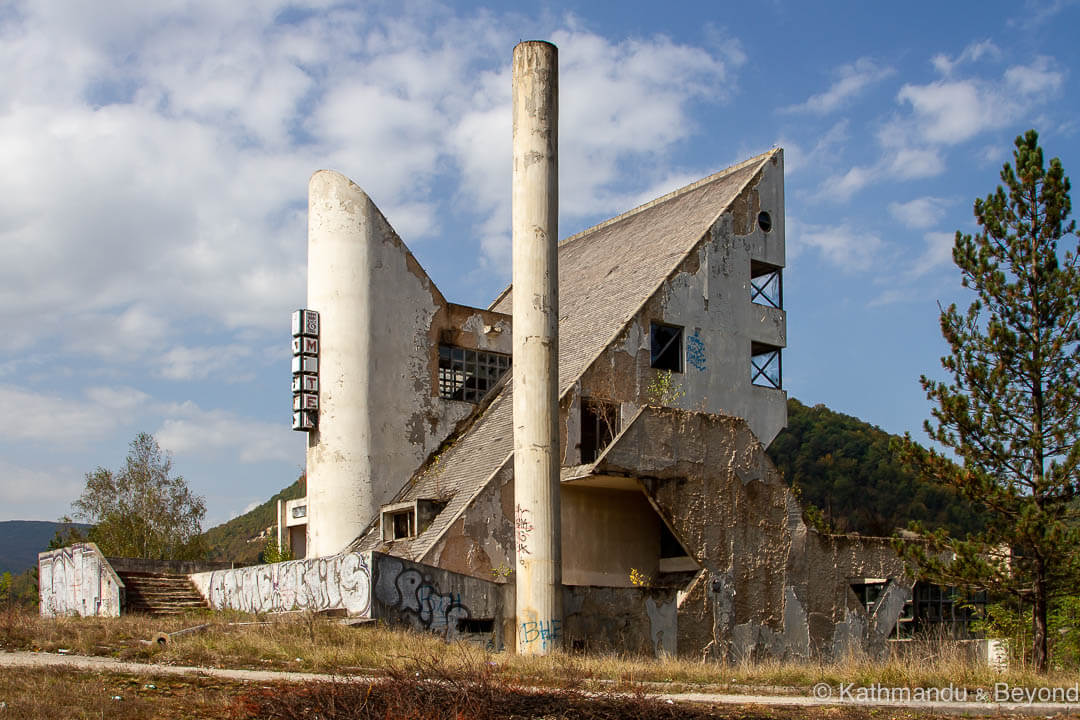
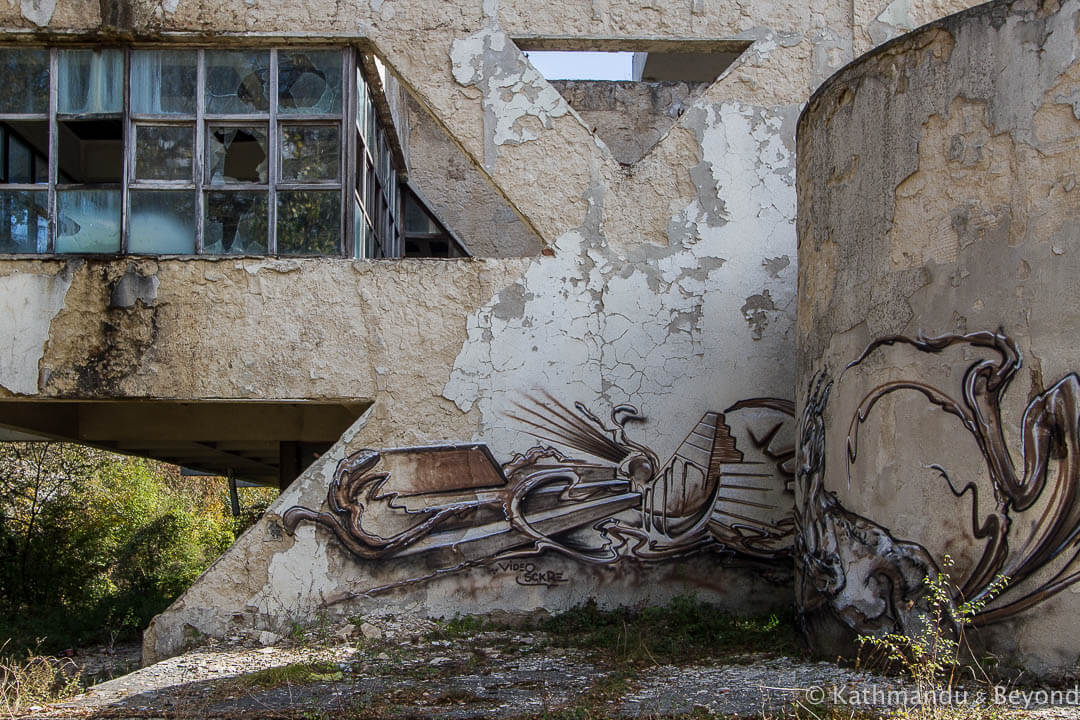
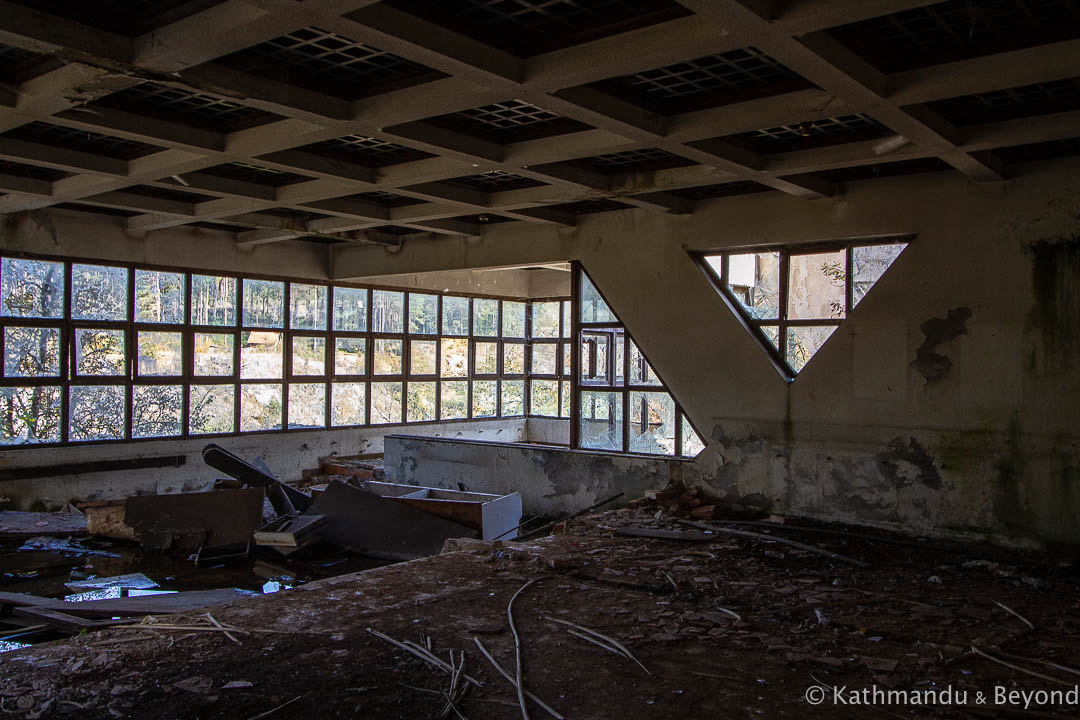
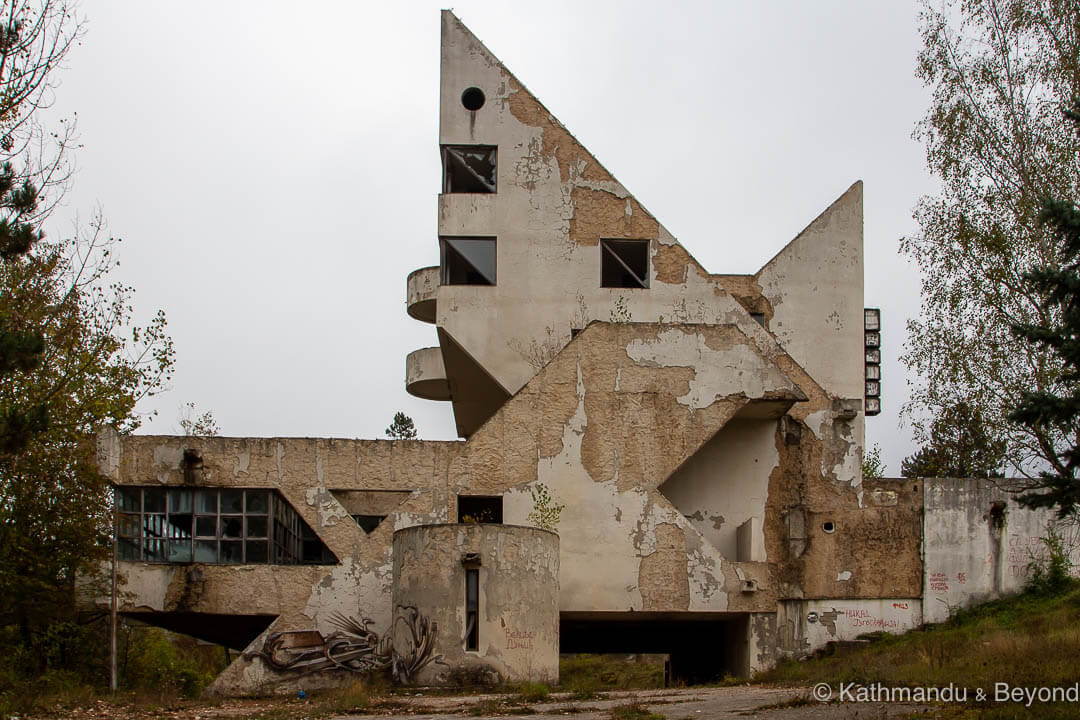
Children’s Maritime Military Health Resort of Insured Persons in Krvavica, Croatia
The best spot from which to get an overview of this peculiar-looking health resort is from the main road above the town. It’s impossible to obtain a similar perspective close up because this now-derelict structure is encircled by pine trees on all sides. But that lack of overall perspective is replaced with an array of circular sweeps and other modernist touches that would have any fan of the architectural style swooning with delight.
The Children’s Maritime Resort for the Treatment and Rehabilitation of Children with Lung Disease Insured Through the Military, to give the place its full title, dates back to the mid-1960s and was established as a health/holiday resort for children who had a parent in the Yugoslav People’s Army (JNA) and who suffered from breathing-related illnesses. So, the children’s resort wasn’t technically a hotel but I’m sure the kids who stayed there would have had the opportunity to enjoy the resort’s seaside location when not under medical supervision. Besides, apparently, it was fairly easy in Yugoslavia back then get a doctor to sign your child off with an affliction that was more serious than the one they actually had in return for a reciprocal ‘favour’.
The resort remained operational until the end of the 1980s and it was the beginning of the Croatian War of Independence in 1991 that led to its resulting abandonment but not until after it became a shelter for refugees displaced by the conflict. Prior to this, access to the resort was strictly controlled by the JNA. Other visitors to the region, as well as those who lived in Krvavica itself, were denied entry. As of October 2018, which is when we visited, almost all of this former military resort was accessible to anyone who fancied a poke around. Only an annex building attached via a concrete walkway had a barrier in place preventing access.
Some years back the resort was placed on a register for protected places by the Split (as in the city) department of the Ministry of Culture because of its significance to Croatian modernist architecture. I can’t find any subsequent information, however, about what will happen with the building in the future and so, for the time being, it remains a neat place to explore for an hour or so if you happen to be making your way between Split and Dubrovnik.
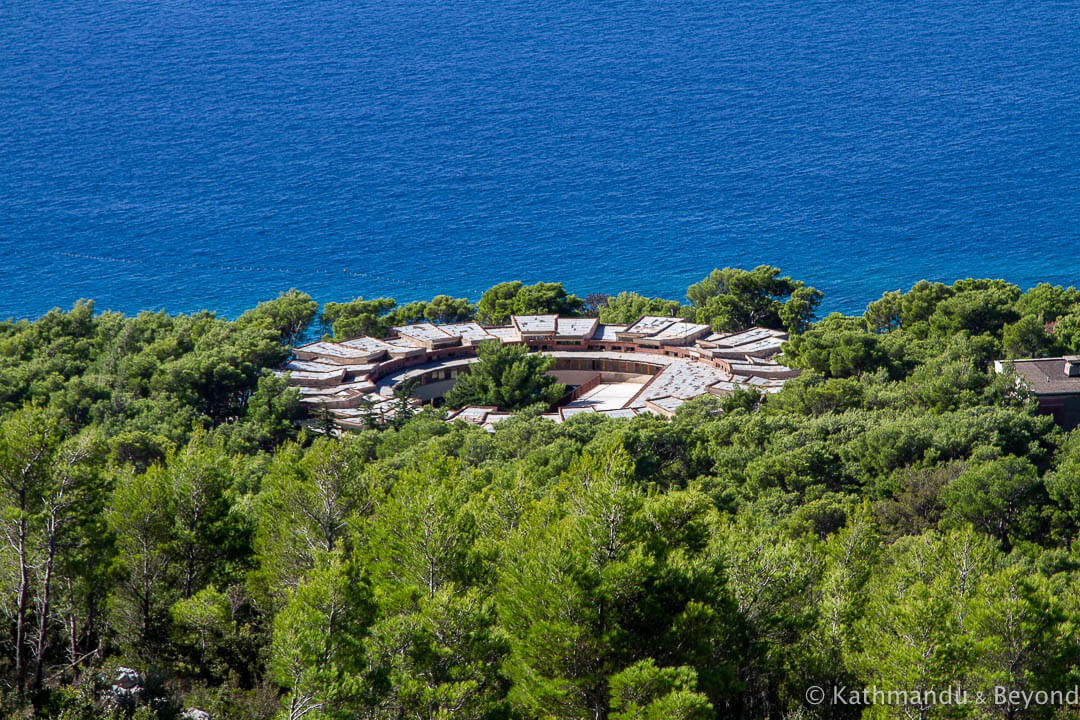
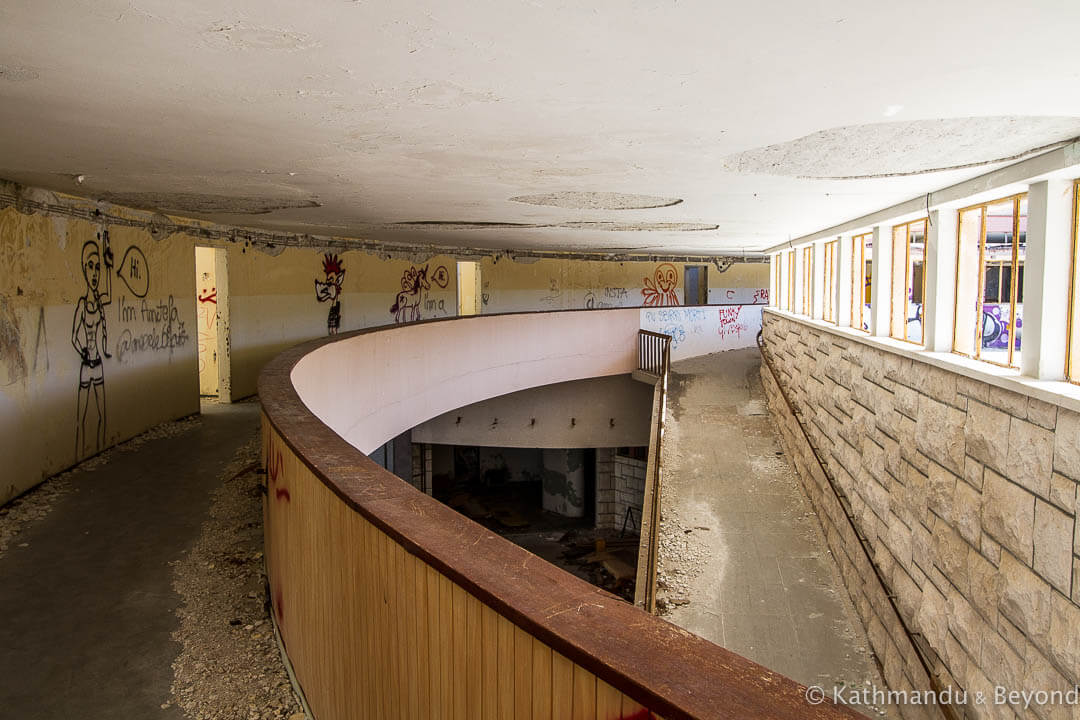
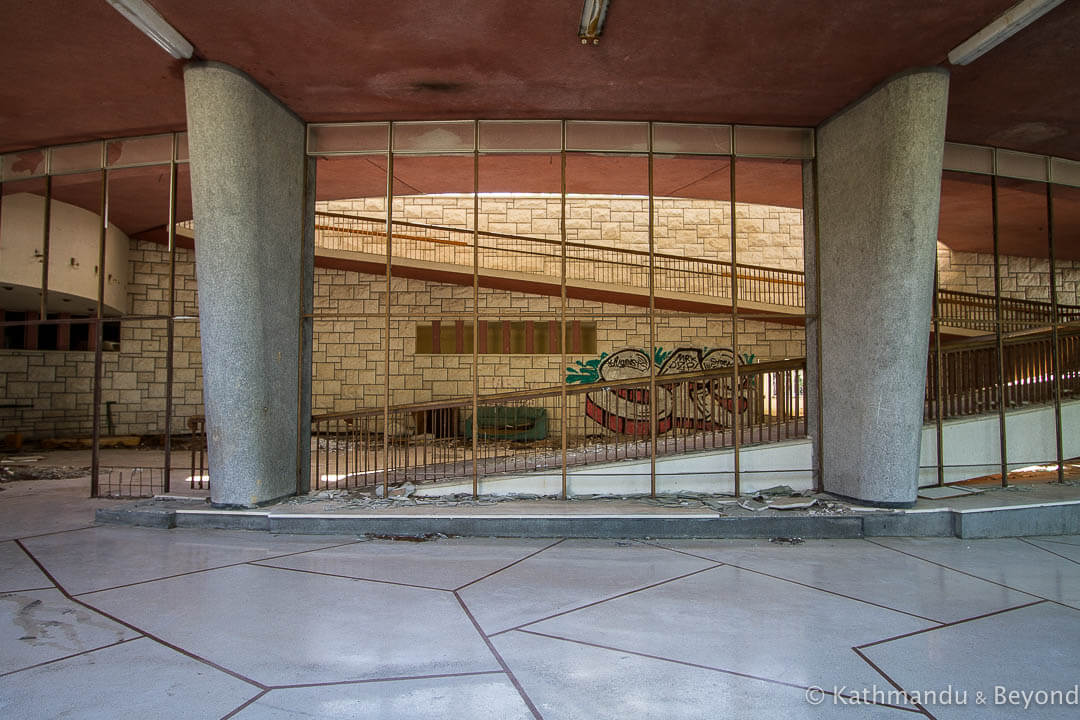
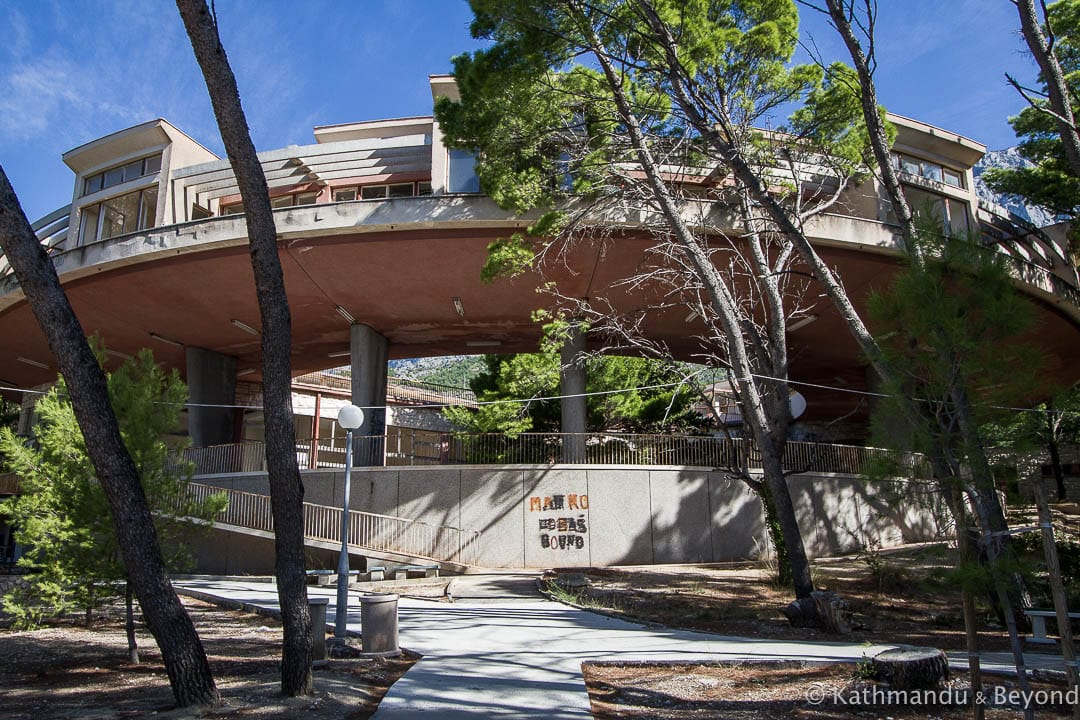
Hotel Sutjeska in Tjentište, Bosnia and Herzegovina
Named after the national park in which it is situated, the Hotel Sutjeska is only a few hundred metres from the previously mentioned Battle of Sutjeska memorial. The hotel is another property that was purpose-built to accommodate those coming to visit the spomenik and enjoy the setting of the national park.
The area was under the control of the Army of Republika Srpska, commonly referred to as the Bosnian Serb Army, during the war and, as a consequence, the memorial complex was badly damaged and vandalised. I’m therefore assuming that the hotel fell into a state of disrepair around about the same time and was, no doubt, used as a headquarters or a billet by members of the Bosnian Serb Army. The spomenik has since been repaired but not the hotel. There are other hotels in the national park that are fully operational but I can’t find out whether this one is going to be renovated or, indeed, torn down in the future.
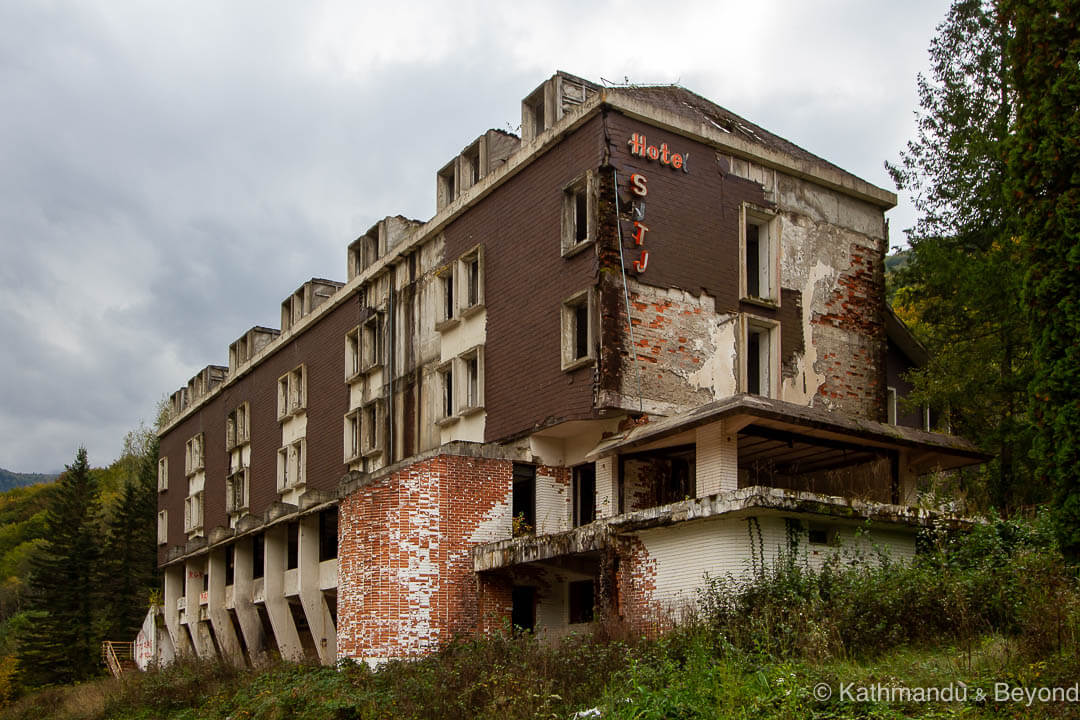
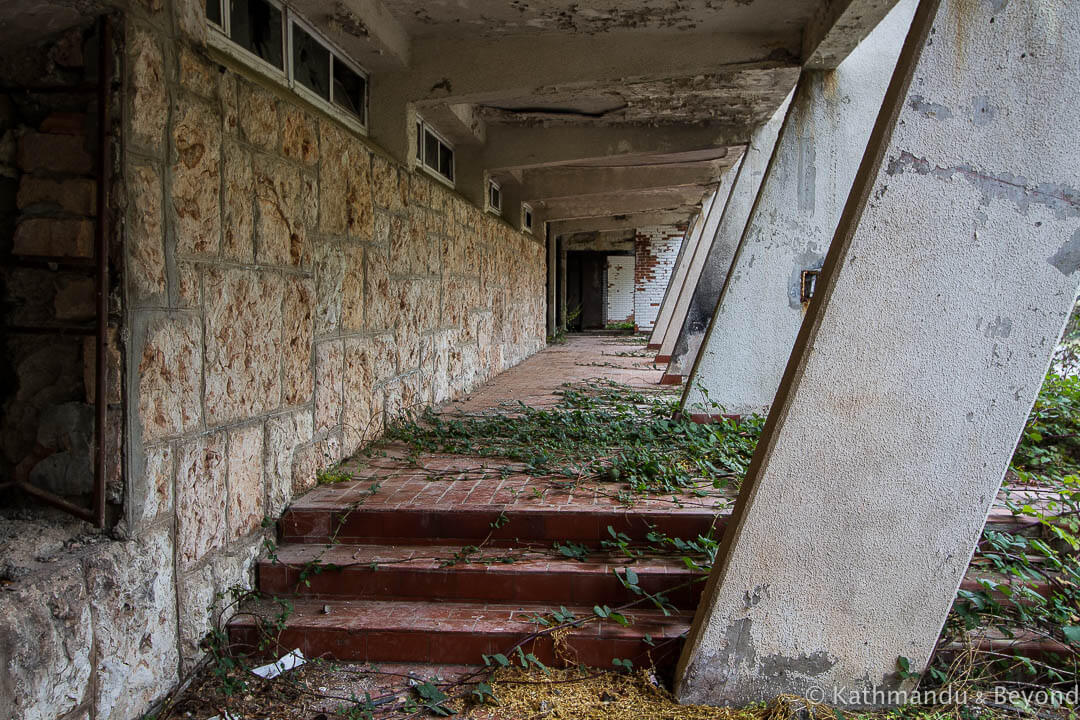
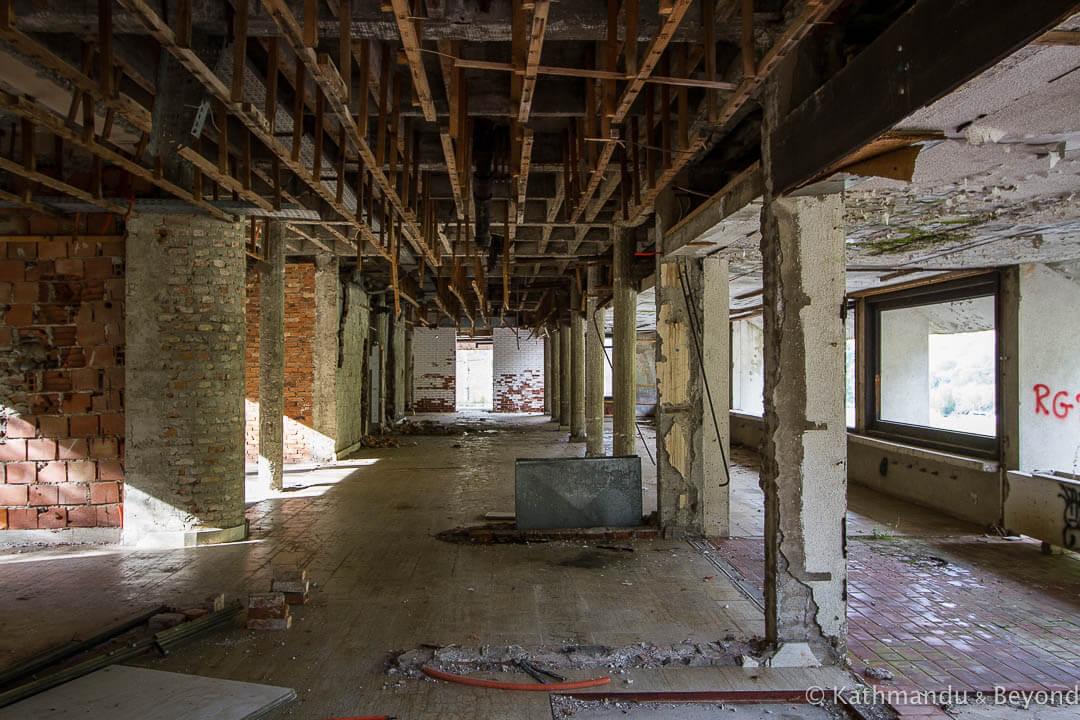
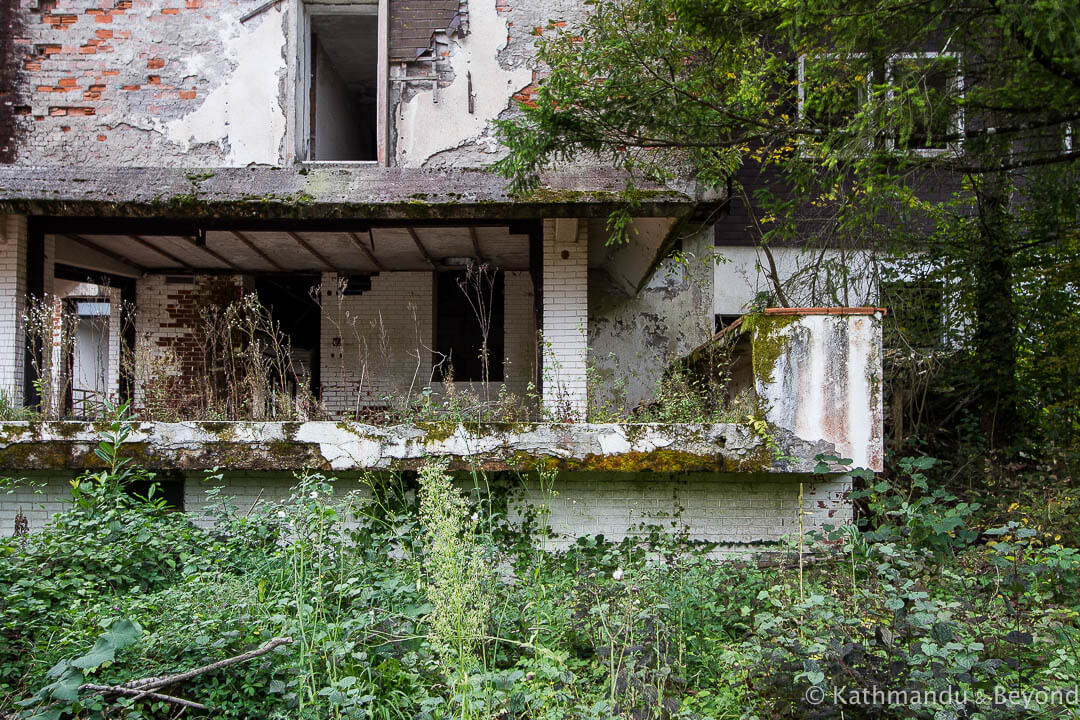
Hotel Marina Lučica in Primošten, Croatia
Whoever chose this particular site to build a hotel knew what they were doing when it came to fantastic locations. From the upper levels of this modernist-style hotel, the uninterrupted view across to the original islet part of the town is glorious and the open-plan design of the public areas would have been the perfect place from which to take it all in.
The owners/management also took advantage of the property’s secluded bay and turned it into a naturist (nudist) hotel. This was the early ‘70s when Yugoslavia’s tourism industry was booming and hotels similar to this one, naturist or not, would have been dotted all the way along the country’s Adriatic coastline.
Although nothing definitive is known about how the property ended up becoming abandoned, it was certainly a victim of the Croatian War of Independence (part of the Yugoslav Wars) in one way or another.
READ MORE: Abandoned Croatia: Hotel Marina Lučica near Primošten
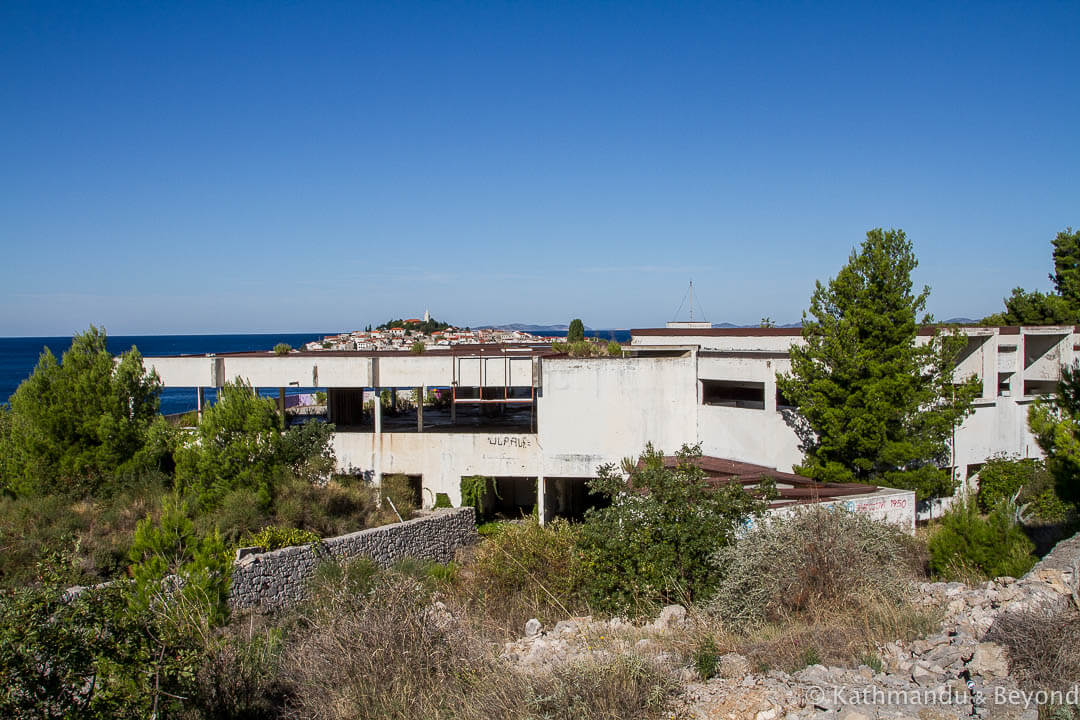
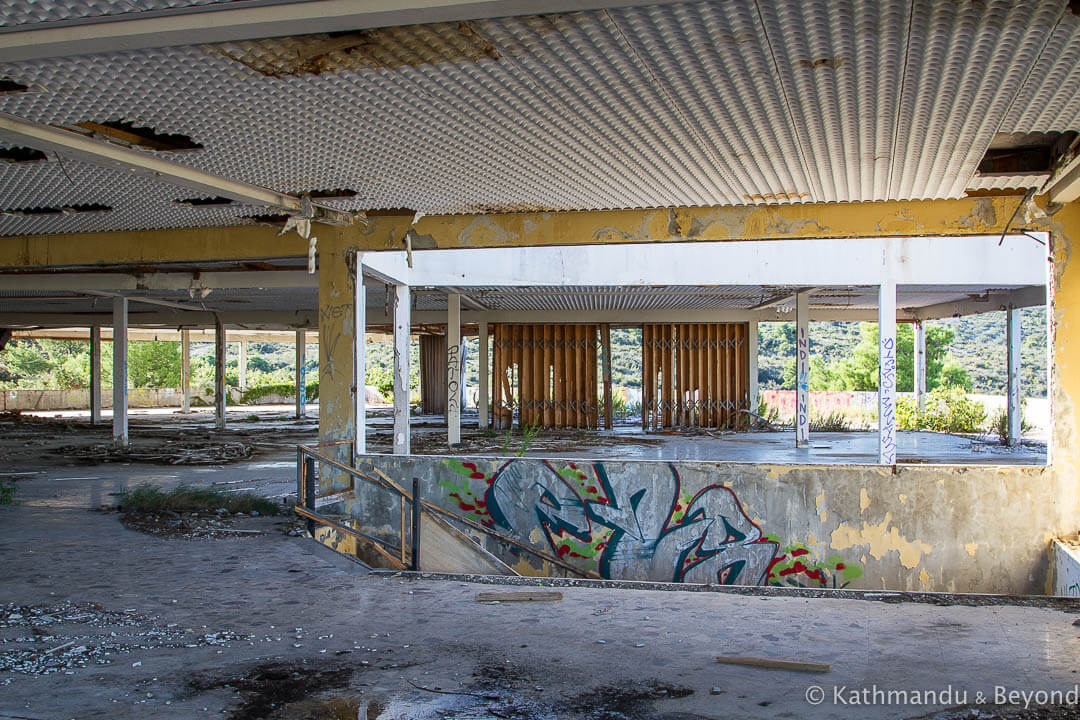
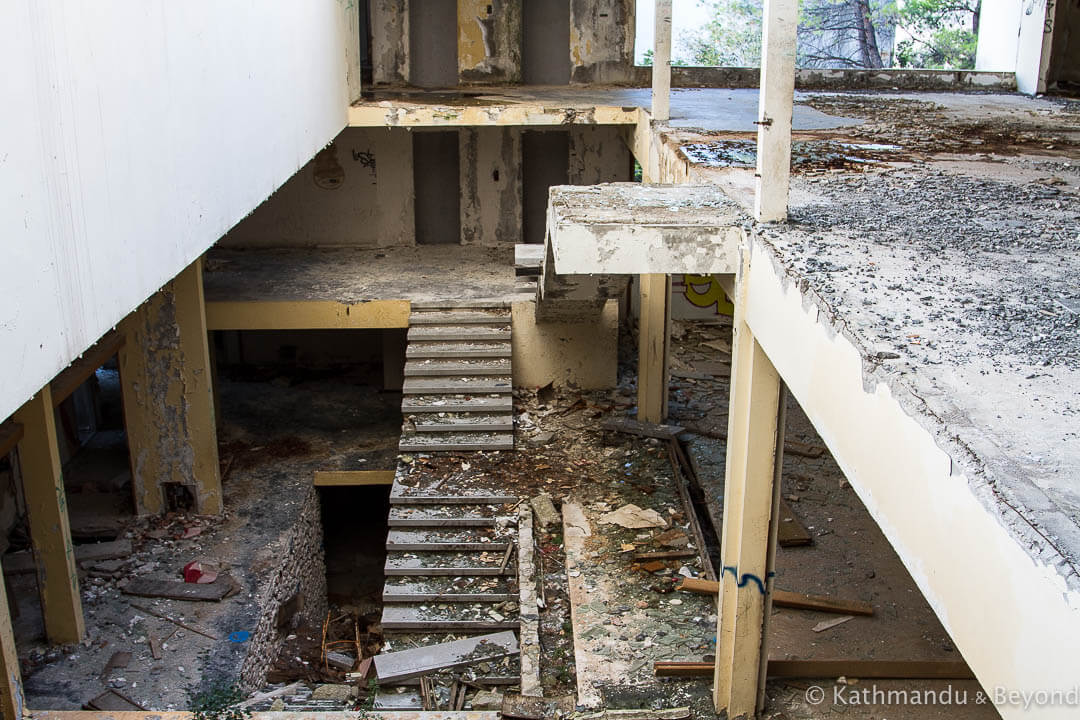
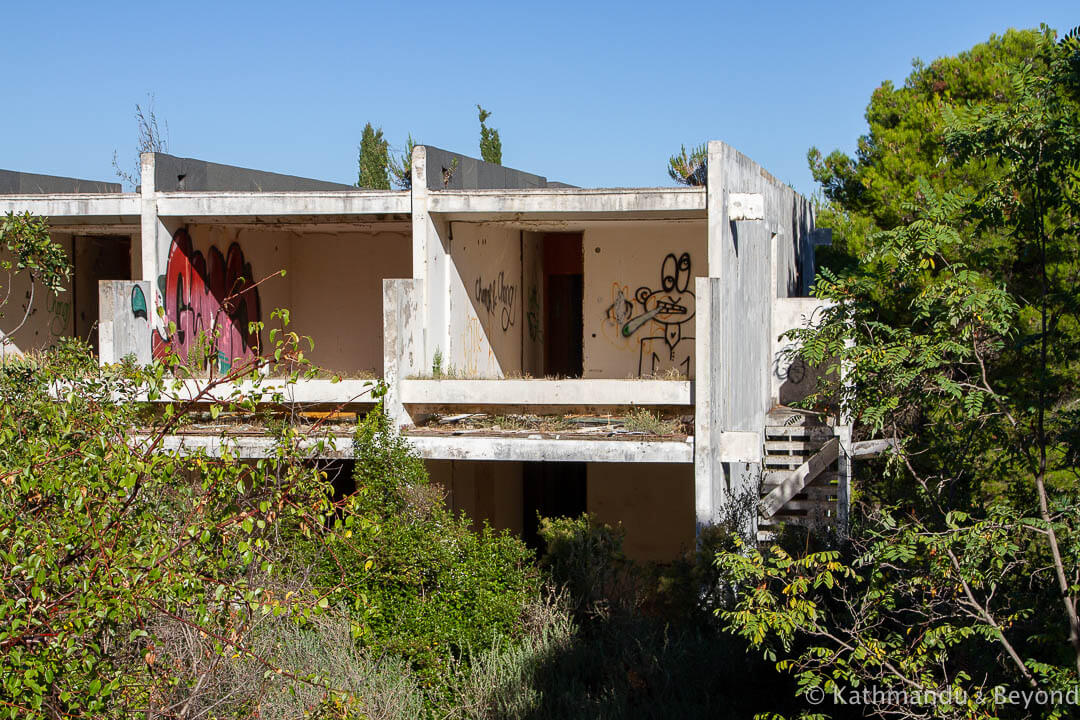
Military Resort Valdanos Bay near Ulcinj, Montenegro
This is yet another resort that belonged to the Yugoslav military. Consisting of a series of duplex apartments, a campground and a couple of swanky private villas (which were presumably for the top brass?), the resort sprawled across its hilltop location and provided stupendous views of Valdanos Bay. There was also direct access to the pleasant crescent-shaped beach situated at the foot of the resort via a spiral staircase that led down from the restaurant. And if that wasn’t enough to set the scene, Valdanos is well known for its olive production and the entire complex was, and still is, surrounded by hectare upon hectare of olive groves.
In fact, the setting for the property was a bone of contention for local residents from the start. Originally, in the late 1970s, the Federal Secretariat for the National Defence of Yugoslavia wanted to construct a military base in the area and they gave those living on the land they wanted to requisition no option but to sell up and move away. Having acquired the land, at some point, a few years later, a decision that was based on funding, or the lack thereof, was made to build a (less-expensive) resort for military personnel on the site rather than a defence base. By 1983, the Military Resort Valdanos Bay was completed and accepting its first guests.
As is the case with all the abandoned hotels mentioned in this post, the resort’s demise is linked to the collapse of Yugoslavia in the early 1990s.
During the early years of the Croatian War of Independence, ships belonging to the Yugoslav Navy had been forced to leave Croatian ports. With few options open to them and neighbouring Montenegro part of the newly formed Federal Republic of Yugoslavia (*), in other words, an ally, it was decided that the fleet should sail south.
(*) Montenegro aligned itself with Serbia during the Yugoslav Wars and formed the Federal Republic of Yugoslavia. The country was established in 1992 and lasted until 2003. Thereafter it became the State Union of Serbia and Montenegro, which ceased to exist after Montenegro gained full independence in 2006.
Initially, the fleet docked in the Bay of Kotor, which is north of Valdanos, but, in late 1993, the Yugoslav Navy high command announced that they wanted to reinstate the original plan of turning Valdanos into a military base. The Supreme Court of Montenegro rejected the proposal and Valdanos continued to survive as a holiday resort. But, with conflict ongoing in the region and the number of visitors continuously dwindling, eventually the resort became economically non-viable and closed for good in 2007.
As early as the following year, there were bids to redevelop the property but, up until now, nothing firm has come from any of them and the place is slowly succumbing to the elements and decaying more and more. To complicate matters, there is also an ongoing legal battle in which those who originally lost out and only received negligible compensation have gone to the high court, arguing that their land should be returned to them because it was never used for the intended purpose of housing a defence facility.
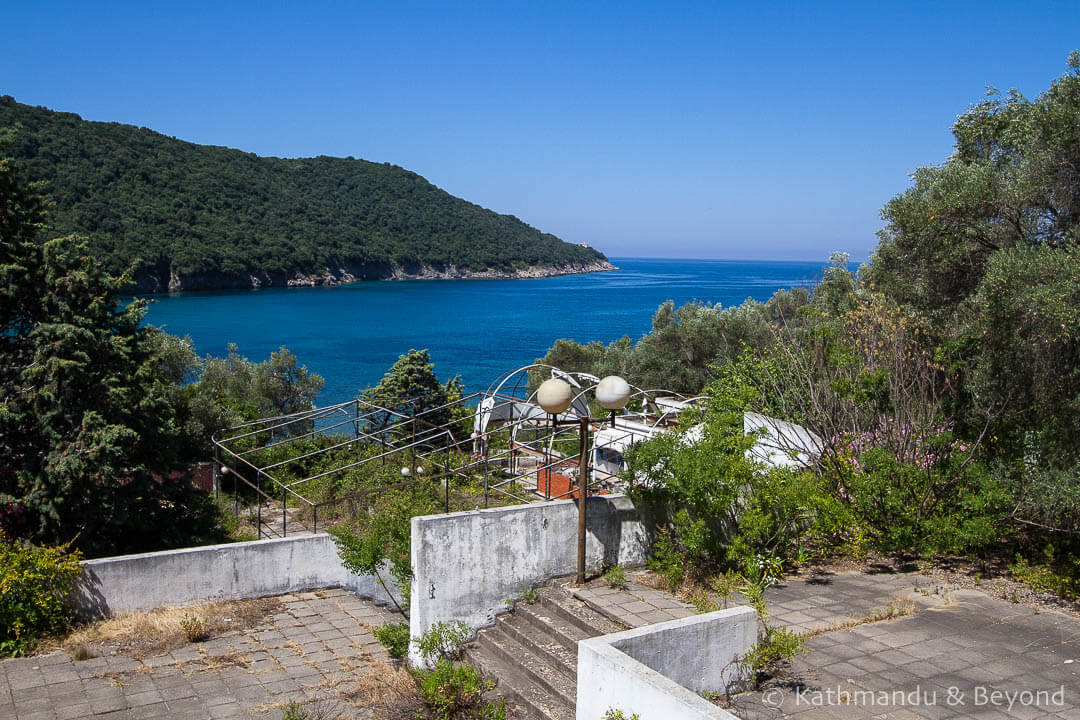
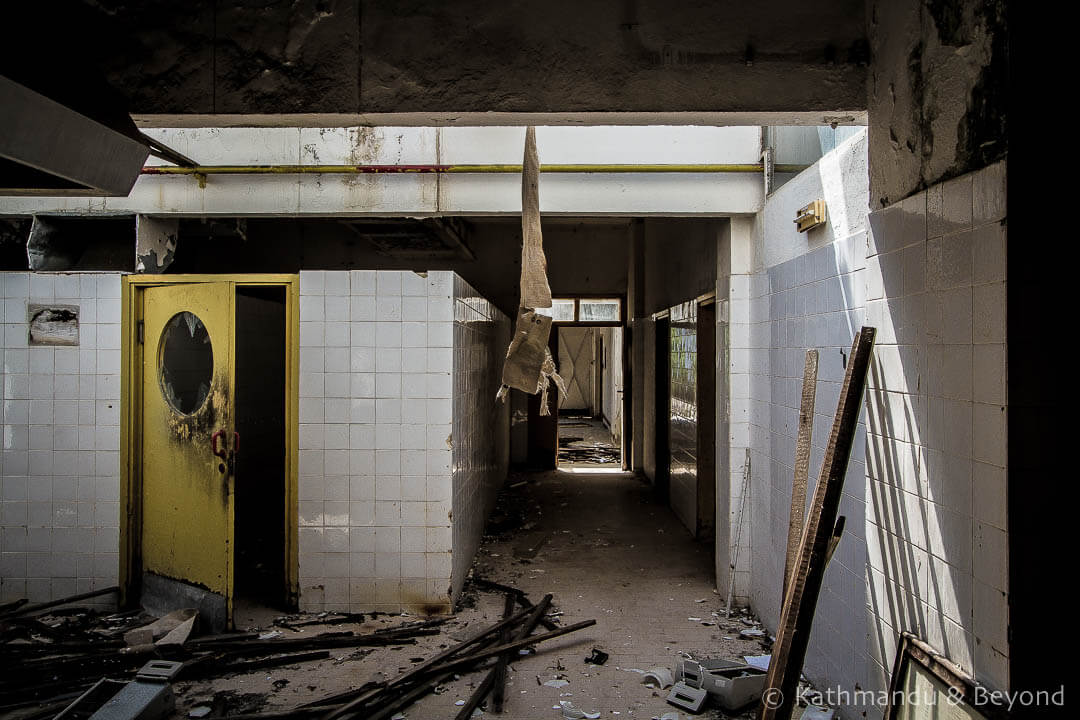
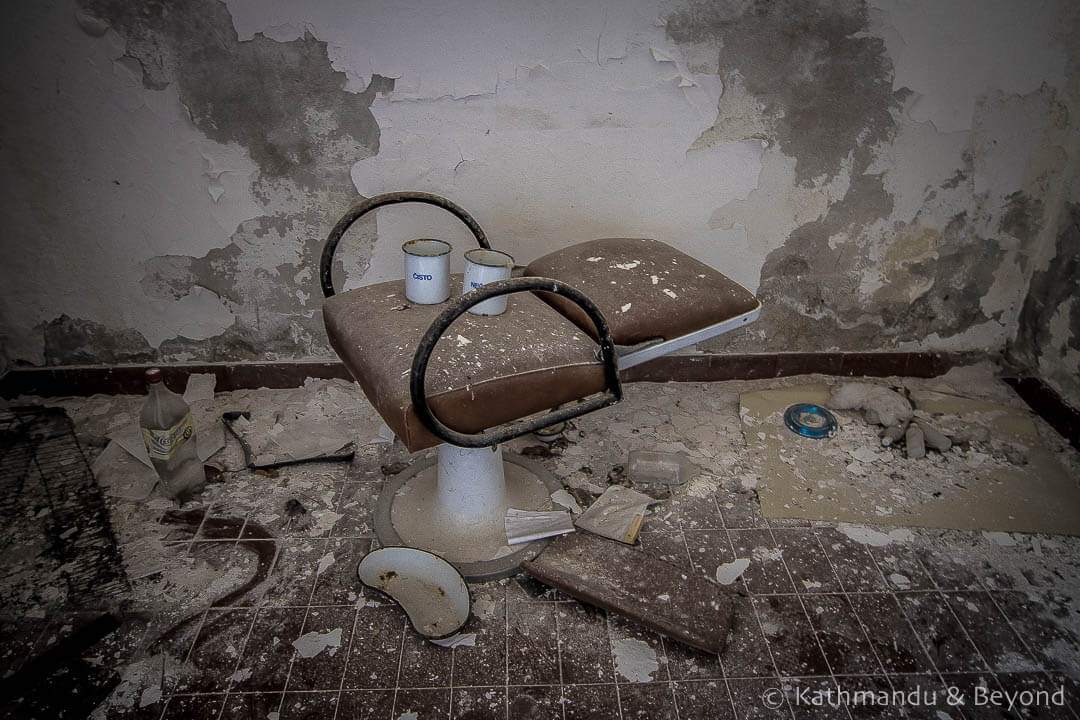
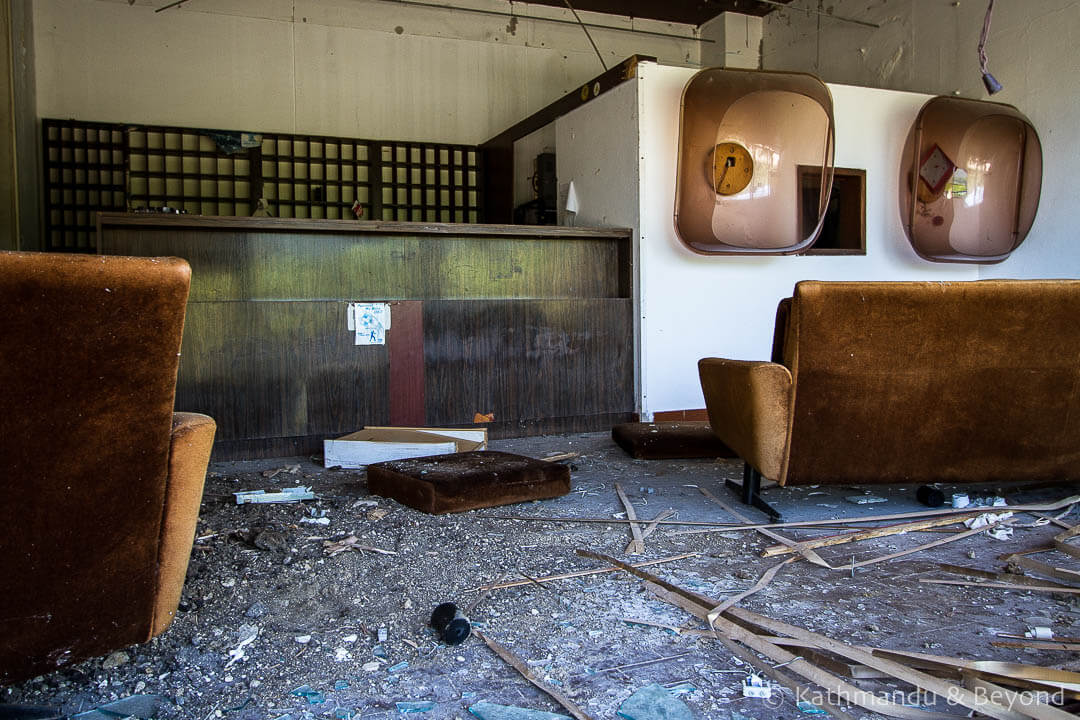
Hotel Sava in Jasenovac, Croatia
This abandoned hotel is situated close to a remarkable spomenik called the Stone Flower. The monument is part of a larger memorial complex commemorating the many thousands of victims who were put to death at Jasenovac concentration camp during World War II by Croatian fascists who were loyal to Nazi Germany and known as Ustasha. Dubbed the ‘Auschwitz of the Balkans’, the majority of the victims at Jasenovac were ethnic Serbs, although Jews, Roma and political dissidents were also murdered at the camp.
Named after the Sava River, which the backside of the property overlooks, the hotel was built to accommodate those visiting the site of the former concentration camp. The memorial complex itself was caught in the crossfire during the Yugoslav Wars. Initially, pro-independence Croat military had the upper hand in the region and they purposely damaged, looted and vandalised the memorial site. This was September 1991 and a month later they were forced to retreat from Jasenovac by advancing JNA forces. It is probable, therefore, that the hotel was initially under the control of the Croats and was damaged when JNA forces advanced into the town and this is what led to its eventual abandonment. Its modernist appearance would suggest that the hotel was constructed at some point in the 1970s.
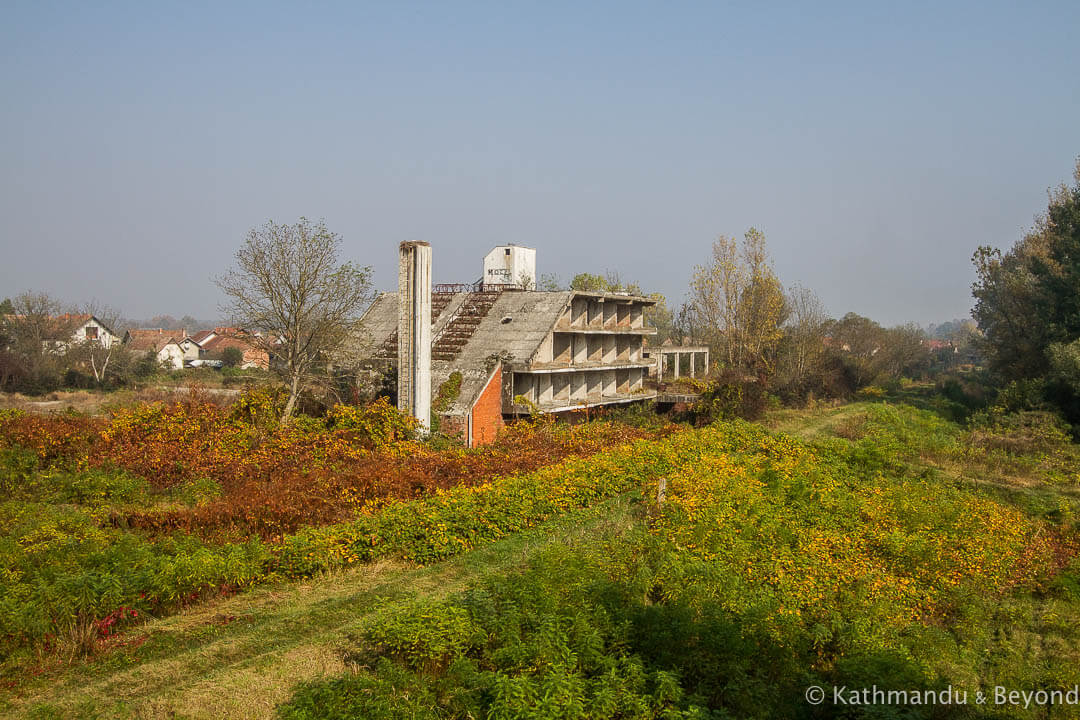
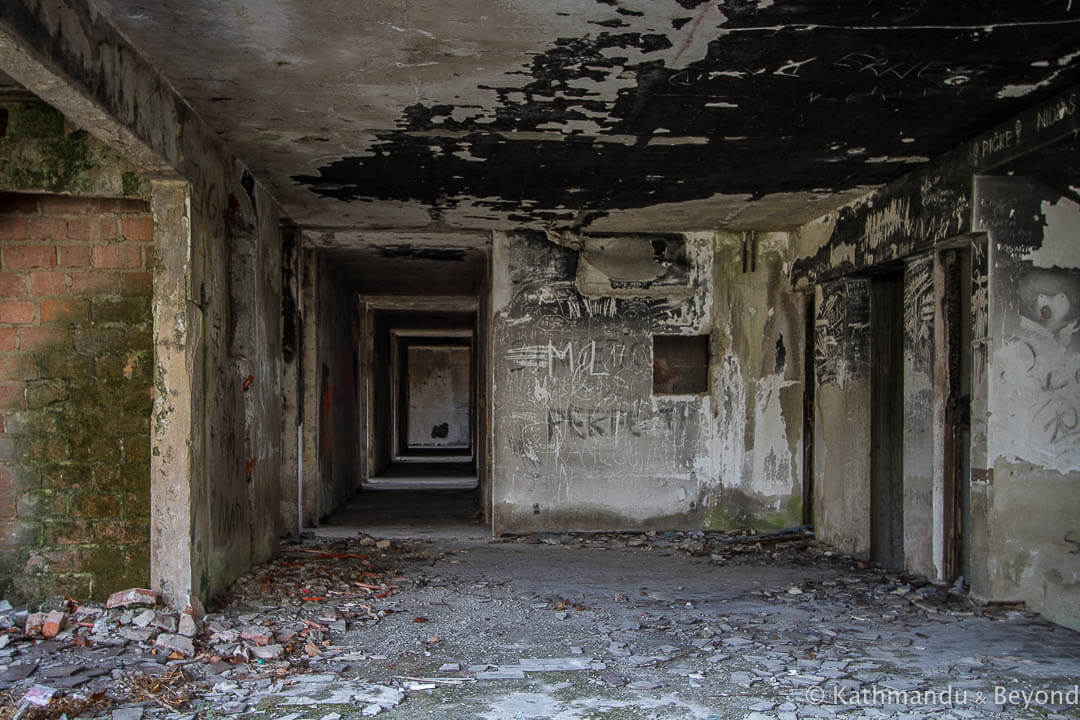
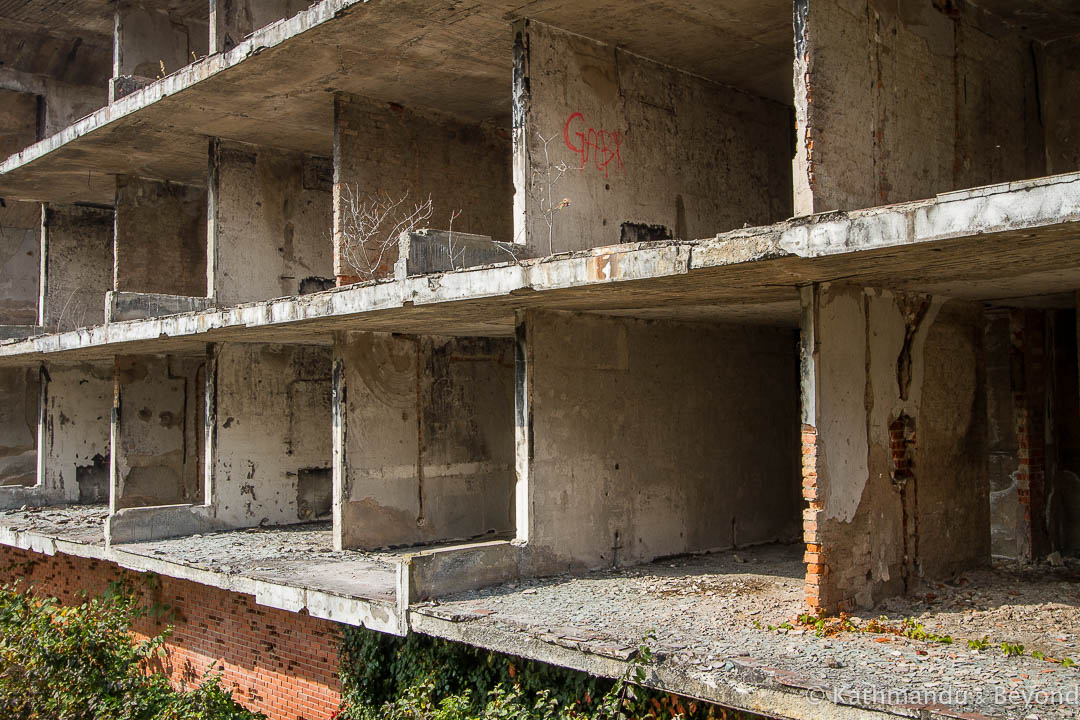
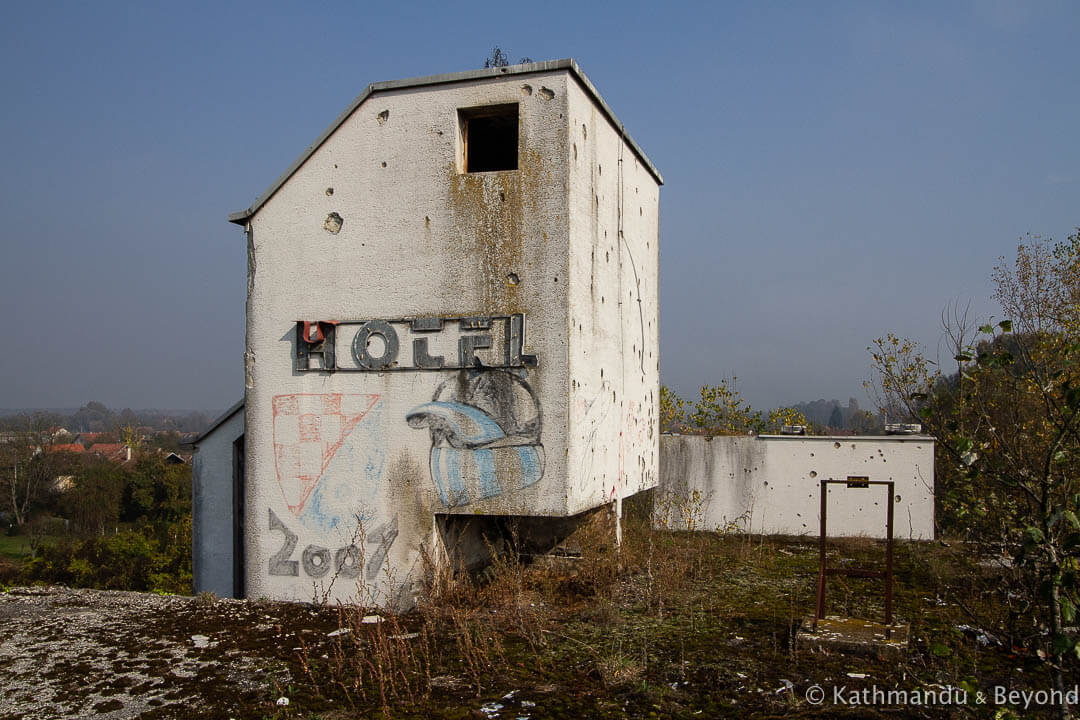
READ MORE BLOG POSTS ABOUT ABANDONED PLACES
READ MORE BLOG POSTS FEATURING THE BALKANS
IF YOU ENJOYED THESE PHOTOS OF ABANDONED HOTELS IN THE BALKANS, PLEASE SHARE IT…
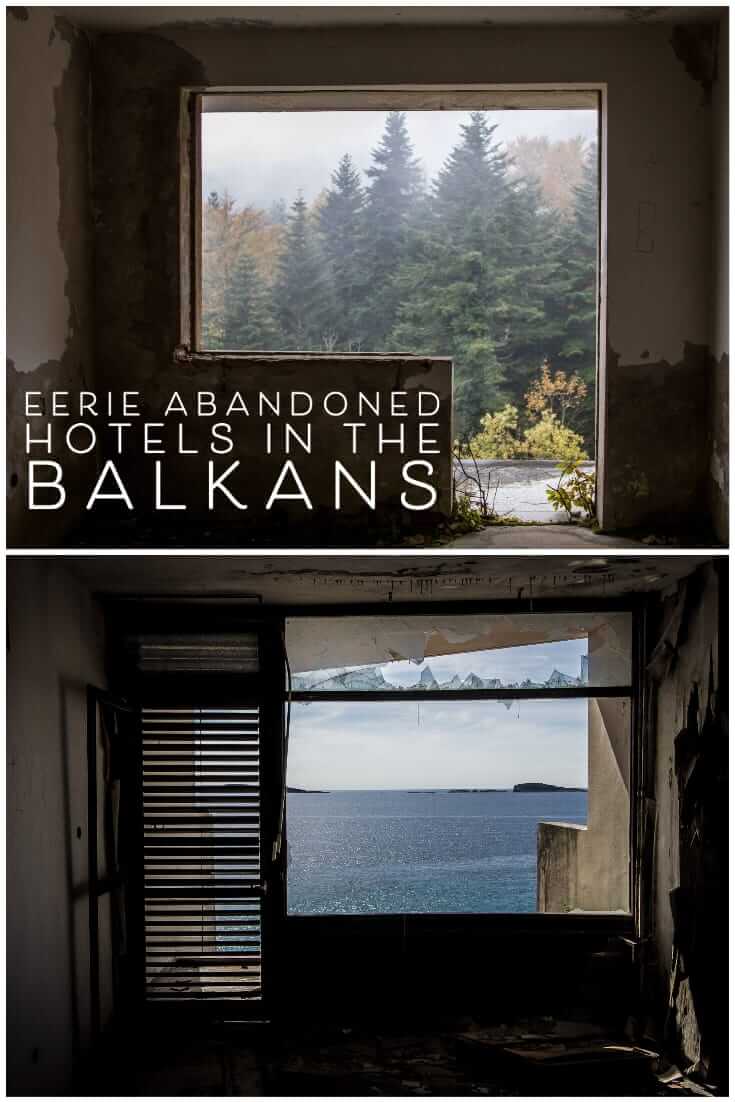
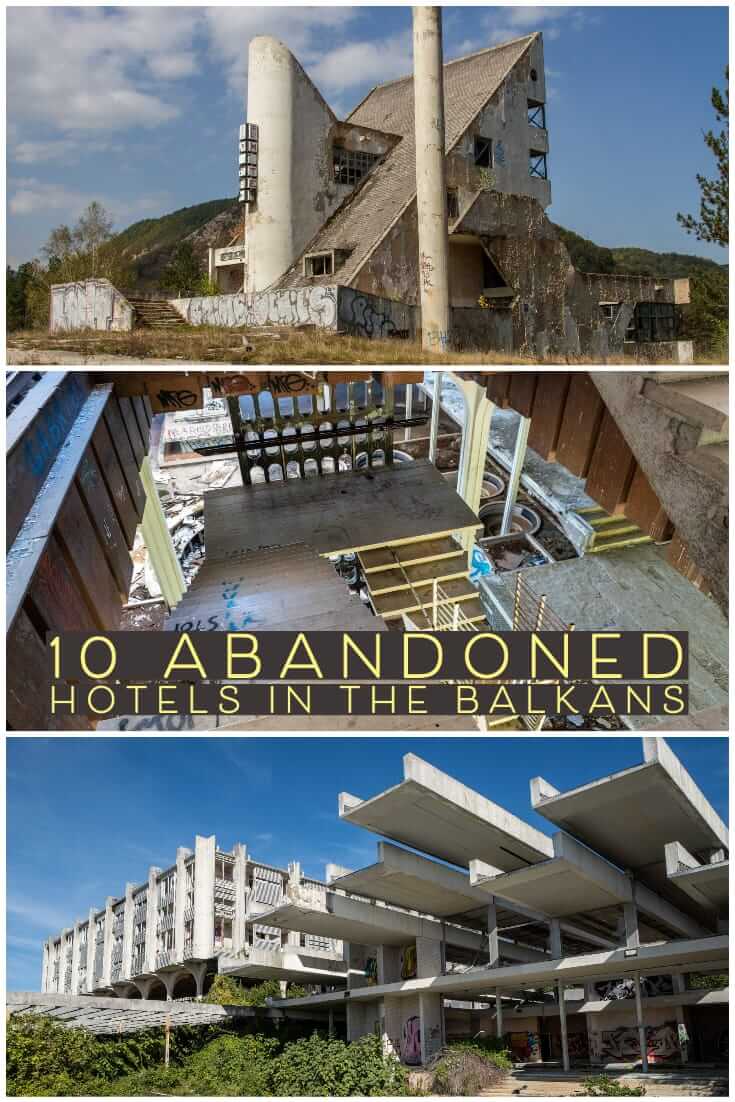
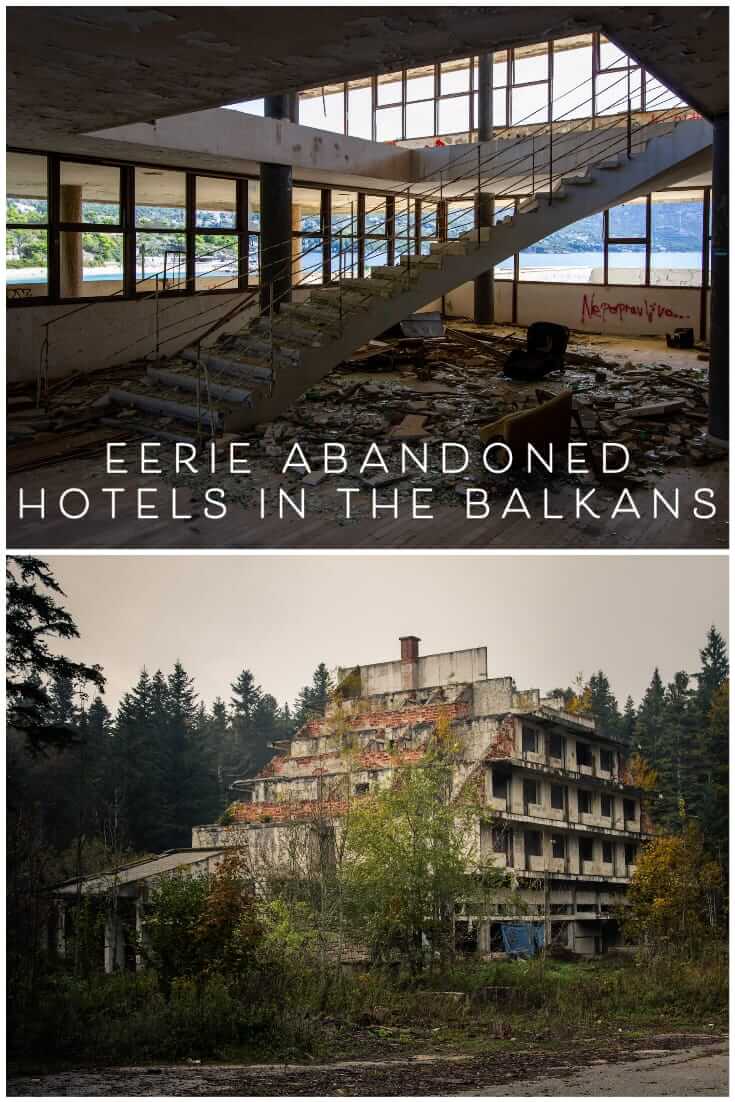

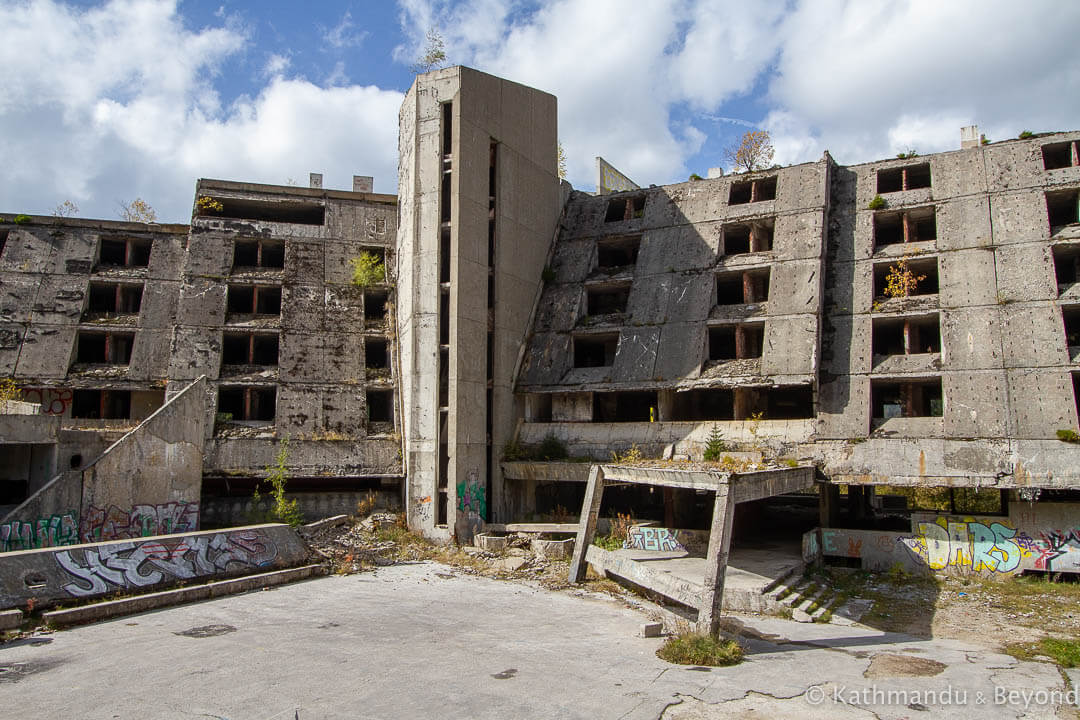
Wow Mark. Absolutely haunting. I think it’s because life, human life, resides in these spots for a bit. Everything seems bustling. But time and decay removes human life. With that, the residual energy of the living feels like it sticks around. That ups the creepy factor along with the truth that once humans become extinct, mother nature will carry on just fine, thank you. She never needed us LOL. Fabulous photos guys.
Agreed. We are constantly enthralled by the effects of nature taking over man-made places.
There’s more to find in the Balkans. Kukës Albania (never been a part of Yugoslavia) is the home of hotel “Tourism” (Dilapidated Tourism Center on Google Maps). Open since the 70’s or1988 (depends on which story is true) but shortly abandoned thereafter and mostly destroyed by a fire, but that is al that is known (so far) about this hotel. You have a perfect view from there over Kukës and where the rivers Black and Wihite Drin meet, going further in the Drin.
North Macedonia (not affected by any Balkan war at al, separation from Yugoslavia was rather peaceful) is home of the abandoned hotel “Europa” at the shores of lake Prespa (shared with Albania and Greece). As tourism in North Macedonia became more and more concentrated around lake Ohrid (shared with Albania), hotel Europa had a hard time surviving and a fire in 2004 ceased the operation definitely.
As most hotels in your perfect report are victims of the Yugoslav war, it makes me wonder about the situation in Slovenia. They separated from Yugoslavia simultaniuously as Croatia, but the war over there (no direct borders with Serbia, coastline of 47km close to Italy) was rather short.
Thank you for taking the time to comment on this post. As you say, there are plenty more abandoned hotels in the Balkans and we hope to locate some more of them next time we visit the region. We already have the Hotel “Europa” on our list but was not aware of the one in Kukës and so have added that to our list.
Regarding your thoughts on Slovenia, we have travelled extensively there and haven’t had any abandoned hotels or resorts come up on our radar except for the Bellevue Hotel, which is in Tivoli Park in Ljubljana. Its demise was not connected to the Yugoslav Wars. We mention it briefly in our post about Ljubljana (link below). Thanks again for the insight.
https://www.kathmanduandbeyond.com/alternative-ljubljana-slovenia/
Thanx Mark. Regarding your list: Is Sazan (near Vlorë Albania) on that list? The only real island Albania has (there are 2-3 smaller ones) once was a military base in the Hoxha days, but was built as a small village and inhabited. The military families who lived there had apartments (quite a lot), a school, a shopping mall/supermarket, a cinema and yes, also a hotel for the “elite” who visited the island back in the day. And a lot of mushroom shaped bunkers, scattered all aroud the island en the Karaburum peninsula But, Sazan it is rather abandoned these days (few military still live there but not in the original village) and all the buildings over there are more or less in decay, if not collapsed. Only way to get there is with a day trip but a lot of people in Vlorë offer them, mostly during summer time.
I was there twice, in 2018 and 2020, but the decay was rather fast in 2 years. The school is cracking and the hotel was in a far worse state than in 2018. Since a few years it is a popular tourist destination over there so maybe that adds to the (rather fast) decay.
Hi Ard, neither Sazan nor Vlorë (which also looks interesting) were on our list for next time we visit Albania but they are now! Thank you for bringing them to our attention. We have (re) booked a flight to Sofia for next May and the plan is to make our way across North Macedonia towards Albania and will certainly spend time exploring the areas you have suggested. Cheers, Mark
What a great website – your sense of adventure is contagious. This hotel near Petrovac, Montenegro captured our attention but we couldn’t find out much about it.
Thank you for the kind words – we try and look for places to explore that are more unusual! We’ve heard of the building near Petrovac but haven’t seen it ourselves! We are hoping to get back to the region next Spring so will add this to our list!
The hotel at Petrovac is massive! We were there in September 2023. You can tell it was never opened, rather abandoned during construction. The concrete beams/floors allow you to fully imagine how grand it would have been if it had been finished. Local’s public beach now. Don’t get scared driving down thinking you won’t be able to make it back up (like I feared ) the road is narrow and steep, but goes all the way to the beach parking lot.
Thanks for the additional info, Dan. Some of the roads/tracks in that part of the world are a bit ominous, to say the least, so it is good to know!
One more. This one is Hotel Durmitor, which we hear was torn down.
Oops. It didn’t make it the first time.